Click on the button to load the content from www.googletagmanager.com.
Load content

- Tailored Vacation Planner
- Cabin Yacht Charter
- Family Sailing Holidays
- Romantic Sailing Vacations For Couples
- Sailing with friends
- Greece all inclusive yacht charter
- Croatia all inclusive yacht charter
- Food & Wine Routes
- Yacht search
- Luxury sailing

Boat vs. Ship vs Yacht: What’s the Difference?
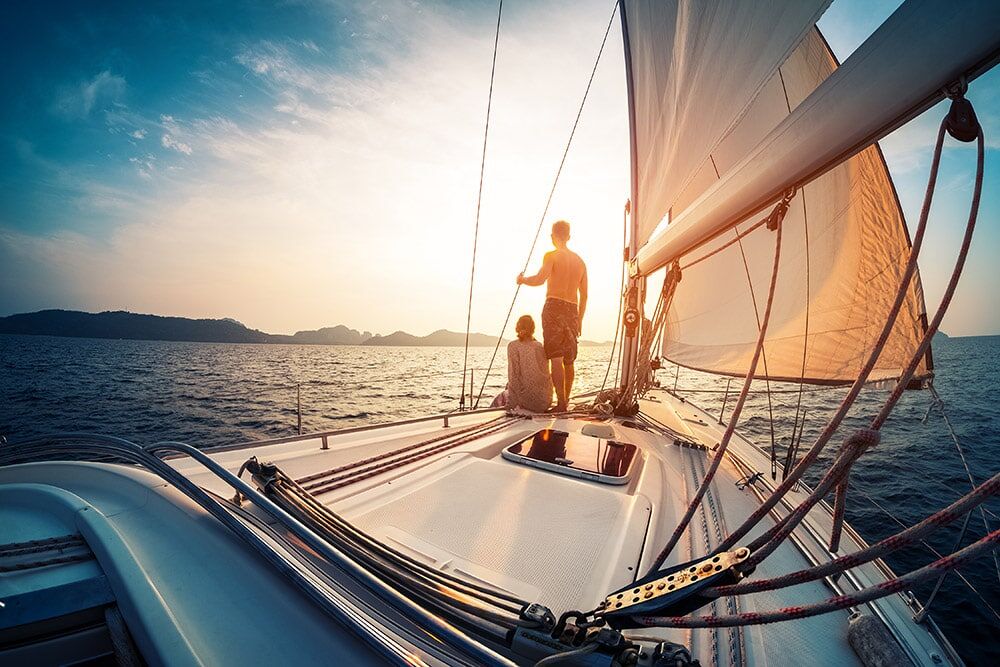
Language is a tricky thing, and picking out the differences between similar terms can be confusing. This is especially true when some of the definitions overlap. This is the case with the case of boat vs. ship vs. yacht . What’s the difference? We know in our gut that there are differences between these three seafaring vessels, but unless you’re a harbor master do you really know what counts as what?
Let’s get into some definitions, and we’re going to start with the easiest to explain: What is a yacht? What is a ship? And what is a boat?
Yacht vs. Ship vs. Boat
What is a yacht.
A yacht, I think everyone would agree, is fancier than a ship or a boat. “Yacht” infers some amount of luxury , and definitely recreation. There’s also something to be said about size. A yacht tends to be anywhere between 35 feet up to 160 feet. And some yachts, known as superyachts, go even beyond that. (Jeff Bezos just built a 417 foot yacht, but that’s really breaking yacht records.)
Because of the size, yachts tend to operate in larger bodies of water–generally the ocean. Yachts are able to handle rougher ocean waves, and they are also equipped with more advanced navigation and guidance instruments than smaller boats. Likewise, a yacht tends to have a full crew to help with the navigation, engineering, repairs, as well as having stewards that serve the yacht’s guests. This can be anywhere from a crew of four or five up to a crew of a few dozen on large yachts.
One interesting thing to note is that outside of the United States, a yacht refers to a sailboat , and a motorized yacht is called a “motor yacht”.
So, is a yacht a boat? Yes, technically a yacht is a boat. But a yacht is a very specific kind of boat.
Want to hop aboard?
Book your dream sailing vacation in top sailing destinations!
- Explore your charter options
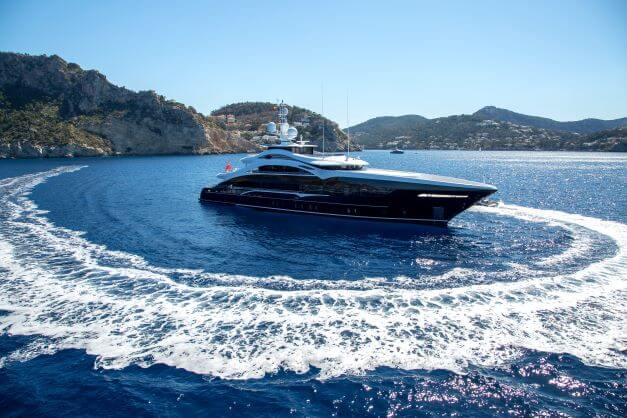
What is a Ship?
The term ship is most commonly associated with a very large boat, and something that is not as fancy as a yacht (one exception is that cruise ships can still be very fancy, but are referred to as ships because of their size and power.)
Ships are generally so large that they would never be found in a lake, with some exceptions for the Great Lakes, and are made for navigating the high seas of the open ocean. An ship can refer to a cruise ship, a naval ship, a tanker, a container ship, and many other commercial vessels.
Ships tend to have advanced navigation and technology, but much more advanced than that of a yacht due to the size, the speed, and the routes that a ship will take. They are meant to be traversing the open ocean for very long periods of time, from one continent to the next, while a yacht may only rarely set across the ocean and most often stays somewhat near land.
A ship will also have a much larger crew than a yacht or a boat. Ships are typically so large that they need not only one trained navigator but a set of navigators, plus an entire engineering team, and includes many more positions.
Finally, a ship is meant to carry things. This may be passengers, yes (in reference to cruise ships and some navy ships) but most ships are for carrying cargo–or even carrying equipment to do work on other ships including repair work or refueling.
What is a Boat?
Well, a boat is harder to define, because a yacht is technically a boat, and a ship is technically a boat. But when people refer to boats, they are almost always referring to something smaller than either a yacht or a ship. Boats may be motorized, like a speed boat, or they may sail, or they may be man-powered, like a rowboat or a kayak. Really, anything up to and including a liferaft, can be called a boat.
(As a side note that will just muddy the waters even further, submarine captains are adamant that their subs are boats. They are not ships.)
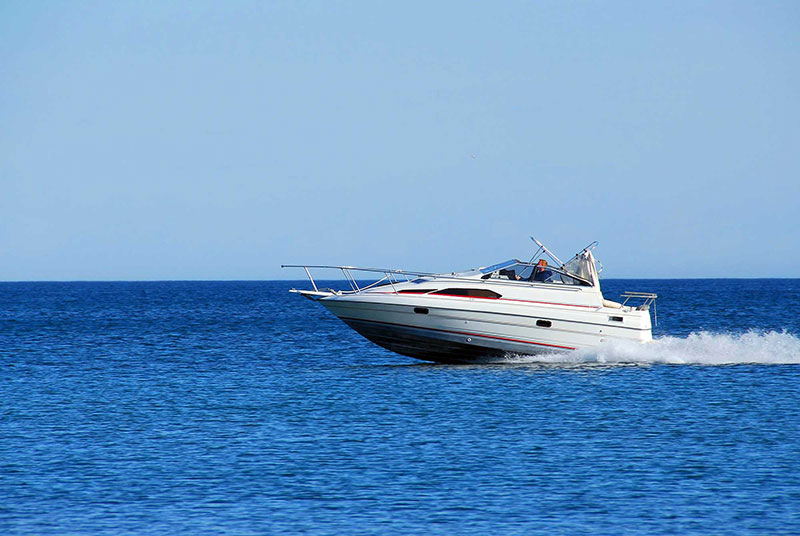
So, Boat vs. Ship Vs. Yacht?
Ultimately it comes down to this: all three of them are boats, but yachts are fancier, larger, and used for recreation, and ships are even larger, used commercially or by the navy, and are meant to cross oceans. The dividing line is sometimes thin, but generally speaking, when it comes to boats vs. ships.vs. yachts you can go by the adage “ I know it when I see it .”
Share article:
Have a question.
We have answers to your questions. So don’t hesitate to get in touch with our team today!
- GET MORE INFO
Feel free to ask us anything. All hands on deck. Let's sail
Thank you for sending us an inquiry, thank you so much for your enquiry.
- The Inventory
- Beyond Cars

When Is a Ship a Yacht, and When Is It Not?
The difference between the two broad categories is determined by one key factor..
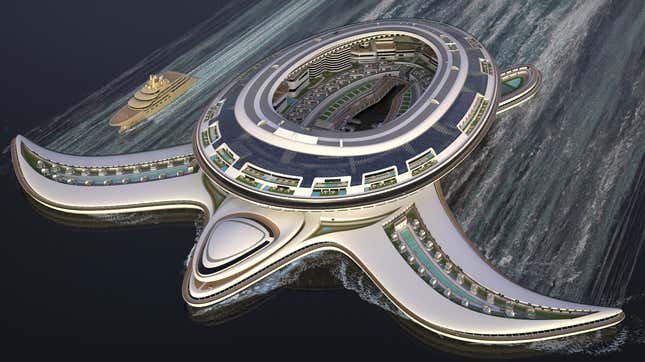
Yachts have been in the news a lot more frequently in recent years. There have been stories like when a Dutch yacht builder requested to temporarily dismantle an iconic bridge in Rotterdam to get a 417-foot-long sailing yacht commissioned by Jeff Bezos out to sea, or when authorities around the world seized the yachts of Russian oligarchs in the wake of Russia’s invasion of Ukraine. Usually, the most notable yachts have the prefixes super-, mega- and even giga- attached to convey their truly enormous sizes relative to most other privately-owned vessels.
Suggested Reading
As a result, ‘yacht’ as a term has basically become meaningless just by the sheer proliferation of private ships in recent years that defy all potential superlatives. It’s like when you say a word so often that it loses all its meaning. Why are there so many more huge luxury maritime vessels in the world? Rising levels of global wealth inequality? Technical innovation? I don’t know. The Pangeos is the latest planned monument to ostentatious wealth. The 1970-foot-long turtle-shaped ship is the brainchild of Italian designer Pierpaolo Lazzarini. However, this self-declared terayacht is not a yacht by definition.
Related Content
The only distinction between a yacht and a ship is simple: It is the vessel’s intended purpose. When you enter a foreign country, every customs agent will ask, “What is the purpose of your trip, business or pleasure?” It is the same when categorizing large water vehicles. The sole purpose of a yacht is recreation. If the craft has any other intended purpose, such as naval warfare or maritime commerce, it’s a ship. The U.S.S. Gerald R. Ford , a nuclear-powered U.S. Navy aircraft carrier, and the Carnival Celebration, a 5,280-passenger Carnival cruise ship , are both ships.
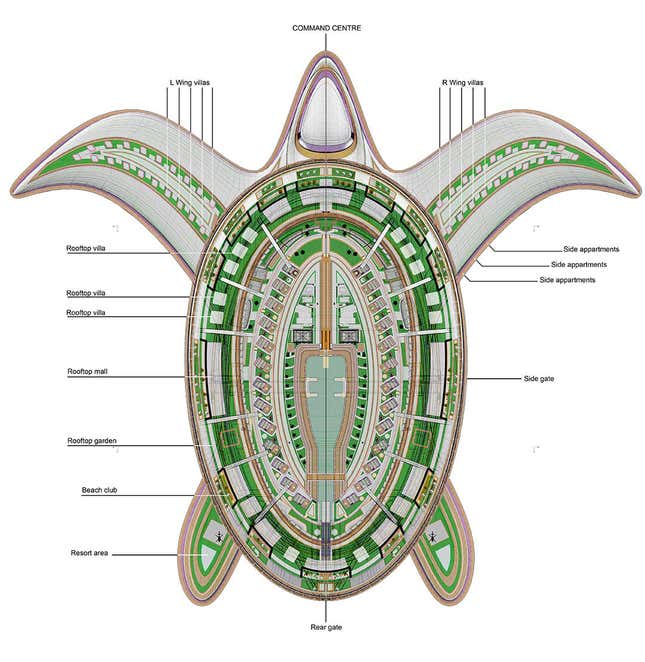
The plans for the Pangeos might feature private vacation villas and apartments. However, the absurd craft would also include also shopping malls and a hotel resort, making the Pangeos a ship. The Pangeos, named after the prehistoric supercontinent of Pangea, will likely never be built due to the ship’s $8 billion price tag.
Besides ship and yacht, boat is another commonly used term. The definition of a boat is much more vague and open to interpretation. Boats tend to be small personal craft and only carry a few people. Though, it’s common for sailors to refer to vessels of any size or purpose as a boat.
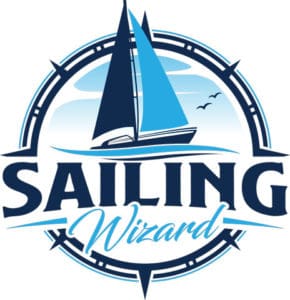
What’s the Difference Between a Boat, Yacht & Ship?
Whether you are a brand new sailor or just wanting to brush up on some terms, it is essential to know what to call a particular watercraft if you’re going to fit in while you’re at the docks or out on the water. There are many nuances and subtle differences between water vessel types, but below are some of the main differences.
In general, yachts are either sailing or motor vessels used for pleasure. Yachts are often luxurious and equipped with an overnight cabin. Boats can be either propelled sail or a motor and come in varying sizes. On the other hand, ships are usually motor-powered and much larger than boats.
Some of the differences between watercraft types can be a little fuzzy, but once you grasp the main differences between them, it becomes relatively easy to tell them apart. If you have no previous knowledge of watercraft, you are likely very confused about what defines a yacht, boat, and ship, so I’ll try to clarify any confusion you might have in the next few sections.
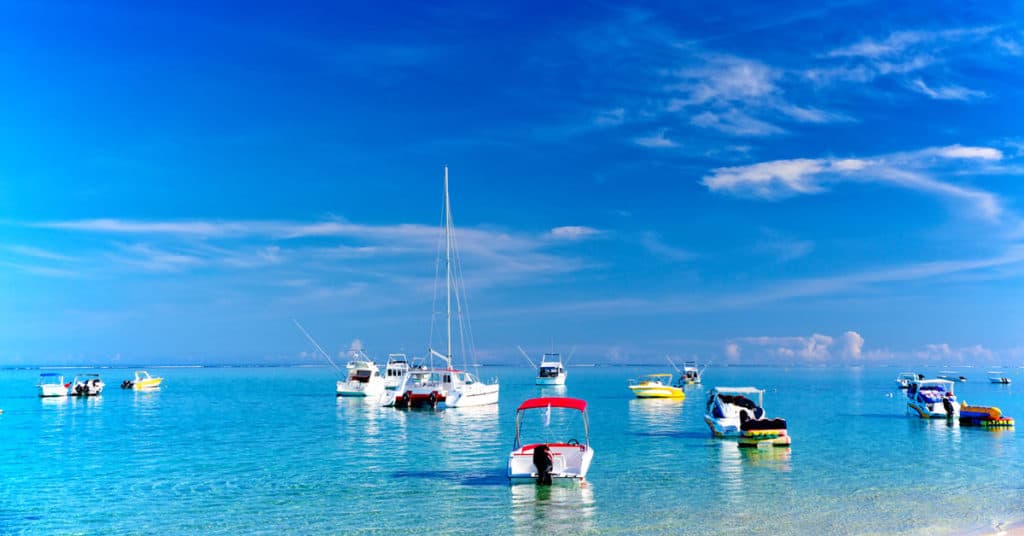
Similarities and Differences Between Boats, Yachts, and Ships
The many bodies of water all over the world are home to an extensive collection of different watercraft. There are so many shapes and sizes that they come in that it is nearly impossible to fit every single one into a specific classification.
However, in the following table, I did my best to loosely define ships, yachts, and boats so that it is easy to see the differences between the types of watercraft.
| Less than 197ft (60m) (usually ~25ft) | $15000 – $100,000+ | Pleasure, Residential, or Commercial | Motor, Wind, or Man Powered | |
| Greater than 33ft | $250,000 – $50,000,000+ | Pleasure | Motor or Wind Powered | |
| Greater than 197ft | $10,000,000 – $500,000,000+ | Pleasure, Residential, or Commercial | Motor Powered (Ancient Ships Used Wind or Man Power) |
As I mentioned earlier, it is impossible to fit EVERY SINGLE water vessel into a particular category, so there are tons of exceptions out there. In addition to the exceptions, different organizations, laws, and people classify types of boats slightly differently.
There is no universally accepted definition for ships, boats, and yachts, but instead many different sets of rules and regulations. In this article, I have tried my best to use the most commonly accepted definitions for each watercraft type.
Now that we’ve gone over some of the main differences and similarities between boats, ships, and yachts, let’s take a look at each type of vessel individually and look at their most prominent characteristics and attributes.
What Exactly is a Boat?
Boats come in a vast array of sizes and shapes. To many people, the term “boat” simply refers to nearly any watercraft, but there are actually a few restrictions and defining characteristics that all boats have. So let’s just get right into it and take a quick look at what exactly qualifies a vessel as a boat.
Overall Size of Boats
As I said before, there is a massive catalog of different types of boats, and they come in a variety of sizes. There are huge boats that hold lots of cargo or people, and then there are smaller ones that barely can stay afloat with a single person on board.
Typically, boats are defined as watercraft that are less than 197 feet long. However, most boats you are likely to encounter on the water are usually around 30 feet long.
General Price Range of Boats
Again, it is hard to accurately give a price range for all boats because they come in so many different sizes, styles, and types, but most modern boats seem to fall in the $1,500 to $100,000 range.
Small Jon boats can cost even less than $1,500, while large sailboats and houseboats can cost well above $100,000.
Most Common Uses of Boats
Boats are used all over the world for a variety of different reasons and to do many tasks. Many types of boats serve a wide range of uses, but most are primarily used as a residence, for pleasure, or commercially.
Some of the most popular types of boats, such as sailboats, bowriders, and dinghies, are commonly used for enjoyment, fishing, racing, or other pleasurable activities. There are also many types of houseboats used as residences and commercial boats used for chartering or moving goods or people.
Propulsion Method of Boats
Due to the wide variety of boats, you are likely to find boats propelled by almost every propulsion method imaginable. Some of the more popular propulsion methods for boats to use are man-power, wind power, and motor power.
Boats on the smaller end often use the power of the people on board to row or paddle, while larger boats rely on sails or powerful motors attached to the stern. Many boats use more than one propulsion method, either together or with one of them as a backup.
What Exactly is a Yacht?
Yachts have many of the same attributes as boats, but their quality, size, and luxury really set them apart. When someone says “yacht,” many people imagine watercraft that are SUPER LARGE, and while there are lots of massive yachts, many smaller boats also qualify as yachts, which might surprise you.
Overall Size of Yachts
There are many different sized yachts, and the rules regarding how big they have to be are not very strict. In general, luxury watercraft greater than 33 feet in length are considered yachts. However, boats smaller than 33 feet are sometimes called yachts if they are exceptionally luxurious and elegant.
There is no upper limit to how large a yacht can be. Yachts longer than 100 feet are often referred to as mega yachts, and ones over 150 feet long called are super yachts.
General Price Range of Yachts
Because the very definition of a yacht requires it to be very luxurious, they often come with quite a price tag as a result. There is quite a range of different price points for yachts, ranging from $250,000 to $50,000,000 and beyond.
Most Common Uses of Yachts
Yachts, because they are so expensive to maintain and purchase, are primarily used for pleasure purposes. Day trips out on the water are typical for yachts, although they often have overnight cabins, so longer excursions are popular.
Chartered yachts are also very popular, which bridges the gap between commercial and pleasure. Although, when you are on a chartered yacht, it is usually for the sole purpose of having a great time and enjoying yourself.
Propulsion Method of Yachts
Because yachts are considered very luxurious and often so large, they are usually solely propelling using motor power. Even if a yacht is on the smaller end of the spectrum, they often only use a motor as a means of driving the craft through the water.
However, many large sailing yachts out there use sails and the wind to propel the vessel. So while the large majority of yachts use motors, keep in mind that some large and luxurious sailboats can be considered yachts.
What Exactly is a Ship?
Throughout history, large ships have been a helpful tool for many civilizations and have allowed them to transport goods and explore places beyond their homes. In modern times, ships are quite common and are used for a variety of different reasons.
Overall Size of Ships
One of the primary characteristics of ships that set them apart from boats is their size. Ships, especially in modern times, are often MASSIVE and are restricted to navigating only extensive waterways.
Vessels greater than or equal to 197 feet long are often considered ships. However, most ships today are huge and often fall in the 1,000-foot range or larger.
General Price Range of Ships
Most individuals will never own a ship due to their extreme maintenance and the cost of purchasing one. While many smaller ships are far less expensive, most modern ships cost anywhere between $50 and $500 million.
Large and luxurious cruise ships can even cost upwards of $1 billion to construct, and that’s not even taking into account staff, maintenance, and other costs.
Most Common Uses of Ships
Ships perform many different duties throughout the world, but usually, they are used to transport passengers or goods over long distances. In addition, they are also often used by military, scientists, fishers, and a plethora of other professions and people. They are also often used for pleasure purposes, in the form of passenger cruise ships.
Overall, ships encompass a large selection of vessels that perform many different duties.
Propulsion Method of Ships
Due to their large size, most modern ships are propelled using motors. However, even though ships are equipped with massive motors, they are still pretty slow and often move at around 20 knots per hour, although some move much quicker.
While most, if not all, ships today use motors to propel themselves through the water, this was not always the case. Before motors were around, many civilizations used ships for military, exploration, transportation, shipping, and many other uses. During these times, ships were powered primarily by man and wind power. Even today, you can occasionally find a sail-powered ship, though they are quite rare.
James Gerard
Hi, I'm James! I started sailing at a very early age here in the UK, and have enjoyed so many opportunities to sail all over the world. I created this website to share the many sailing tips I've leaned over the years, so that you can also discover the joy of sailing with safety and confidence.
Recent Posts
How to Predict Wind Direction & Speed from a Surface Pressure Chart
Learning how to read a surface pressure chart will allow you to predict the wind speed and direction based on the weather chart. This will help you in planning your next sailing trip.
What Does a Black & Yellow Buoy Mean? (Cardinal Marks Explained)
If you see a black and yellow buoy while you're sailing, don't ignore it. Cardinal Marks are there to help you avoid hidden hazards in the water. This helpful article will help you to identify a...
Yacht vs. Ship: What's the Difference?
Key Differences
Comparison chart, primary use, crew requirements, design focus, yacht and ship definitions, what is a yacht primarily used for, why are ships essential for global trade, how does a ship differ from a yacht in terms of size, is every luxury boat considered a yacht, how are ships powered, can a ship be used for leisure, is yacht racing a popular sport, how are ships navigated, can yachts cross oceans like ships, what type of crew does a yacht require, why are ships crucial for naval defense, how is the speed of yachts compared to ships, are ships and yachts subject to maritime laws, do yachts have classifications, what's the largest type of yacht, can ships be privately owned like yachts, how long can ships stay at sea, what amenities can be found on luxury yachts, can yachts be chartered, how are ships built to withstand rough seas.

Trending Comparisons

Popular Comparisons

New Comparisons

“Boat” vs. “Ship”: Chart A Course To Understand The Difference
- Boat Vs. Ship
- Yacht Vs. Boat
Ahoy, me hearties! A true seadog worth their salt would never let aboard a landlubber who calls their ship a boat . That kind of mixup is the talk that gets you walking the plank!
In this article, we’ll sail the seven seas of nautical knowledge to define the difference between the words ship and boat , explain what they refer to in technical and casual use, provide examples of different kinds of both ships and boats , and we’ll even clear up the meaning of the word yacht .
🚢 Quick summary
In casual use, the word boat is often used to refer to any watergoing vessel, regardless of its size or how it’s powered. However, large oceanfaring watercraft—those that use multiple sails or engines—are more properly called ships . In contrast, the word ship isn’t commonly applied to smaller craft. The word yacht is typically used to refer to any larger noncommercial vessel—one used for sailing or other recreation, as opposed to business.
What’s the difference between a boat and a ship ?
By definition, a boat is “a vessel for transport by water,” “a small ship,” or “a vessel of any size built for navigation of rivers or inland bodies of water.” In casual use, the word boat is used to refer to any vehicle used to travel on the water—anything from a canoe to an ocean liner.
In this kind of casual and general usage, the word boat is often used to refer to watercraft of all sizes and types, as you can see in the variety of terms that include the word, such as sailboat , motorboat , fishing boat , rowboat , tugboat , paddleboat , and lifeboat .
In contrast, the word ship is typically reserved to refer to a large, ocean-faring vessel propelled by multiple sails or engines.
(Of course, the word ship is also used to refer to large, nonwater craft, such as airship and spaceship .)
In technical, nautical contexts, the word ship sometimes specifically refers to a sailing vessel that has three or more square masts. As is the case with boat , though, the word ship is applied in the name of a variety of large watercrafts, including cruise ship , cargo ship , pirate ship , battleship , longship , and steamship .
Go Behind The Words!
- By clicking "Sign Up", you are accepting Dictionary.com Terms & Conditions and Privacy policies.
- Comments This field is for validation purposes and should be left unchanged.
In contexts where it’s important to distinguish the difference, the distinction made between ship and boat is typically based on the size of the craft being discussed and if it is used only for ocean or sea travel. Additionally, the word boat can refer to vessels that don’t have any sails or engines, such as a kayak or a rowboat, whereas the word ship usually refers to vessels with many sails or large engines. Even in casual usage, it’s very uncommon for someone to call a small craft a ship , unless they’re doing so jokingly.
One distinction made in nautical contexts is that the word ship often refers to vessels too large to fit inside other vessels. By contrast, the word boat is often used to refer to smaller craft that can fit inside larger ones. For example, a massive cruise ship may have a large number of lifeboats inside it.
What are you sailing? An ocean or a sea ? Learn the difference here.
Yacht vs. boat
The word yacht typically refers to a vessel used for private, noncommercial reasons (those other than business), such as sailing or racing. As a general term, the word yacht can refer to any watercraft that isn’t intended to be used to make money, which includes anything from racing sailboats to billionaires’ floating ultra-luxury mansions.
The word yacht is not used to refer to small vessels, such as row boats or canoes. In casual usage, a yacht may be referred to with the more general terms boat or ship , but certainly not all ships and boats are yachts .
What's the difference between "uncharted" and "unchartered" territory?
Commonly Confused

Current Events
Trending Words
[ frab -j uh s ]
- Email This field is for validation purposes and should be left unchanged.
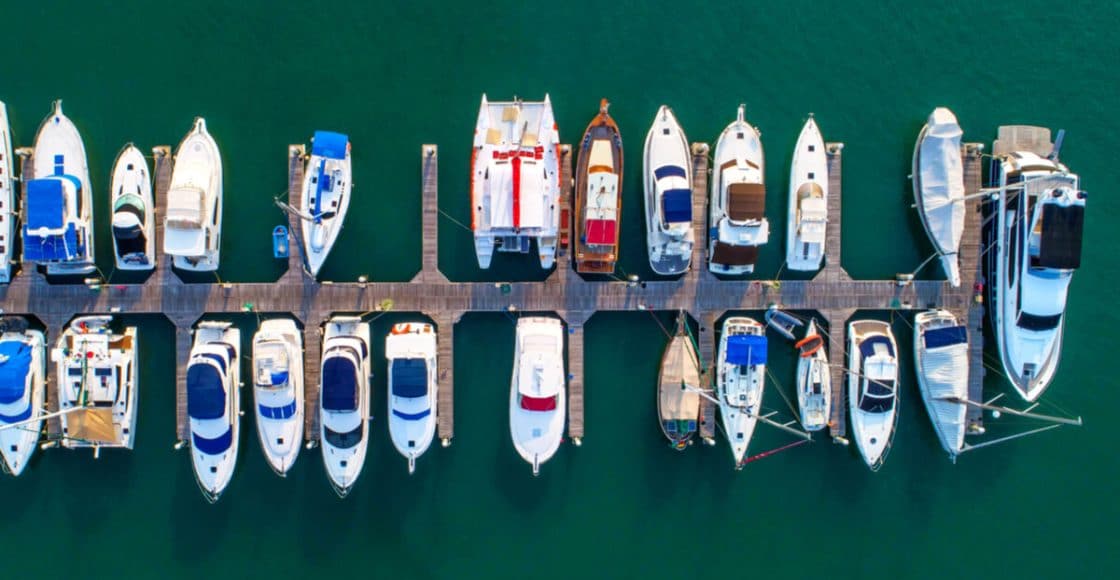
Yachts vs. Boats: What are the Differences?

Table of Contents
Last Updated on April 13, 2022 by Boatsetter Team
Many people use the words “boat” and “yacht” interchangeably, and some lean on the latter to make their ride sound more impressive. But what are the key differences between boats and yachts?
First, let’s look at some broad definitions of a boat, a yacht, and other related vessels.
- “Boat” can refer to just about any kind of vessel— towboat , fishing boat , center console , houseboat , and so on.
- “Dinghy” designates a small boat with a human or wind means of propulsion including a rowing dinghy or sailing dinghy. It also refers to a tender to a bigger boat or yacht.
- “Ship” is a large commercial boat, often used for distance travel and transport of goods or passengers – cruise ship, container ship, etc.
- “Yacht” is typically a larger boat with luxury amenities used as a recreational vessel— motor yacht , sailing yacht .
- “Superyacht” is a large yacht and is often also called a mega yacht . The delineation used to be at 80-feet but again, with today’s size creep, anything under 100 feet would just simply be called a yacht.
So, yacht or boat? Let’s dive deeper into the elements that differentiate a boat from a yacht.
Own a Boat or a Yacht? Learn How to Offset the Cost of Ownership by Listing on Boatsetter
Size of the Vessel
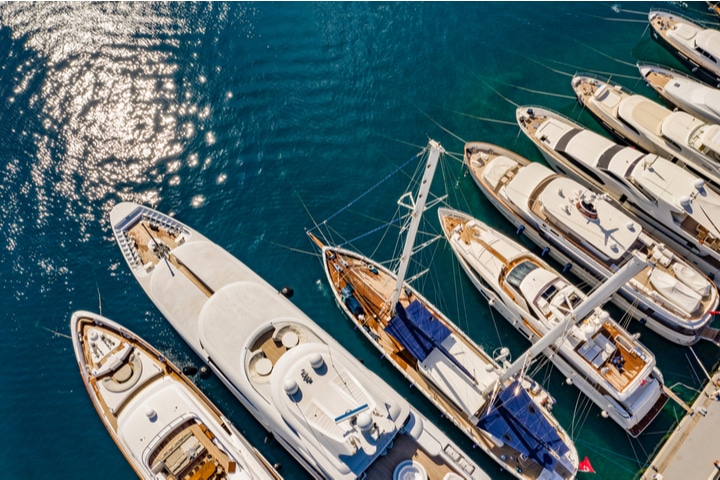
Some place a hard line at 35 feet. Below that, you have a boat and above, it’s a yacht. However, that’s an artificial differentiator.
Just 30 years ago, a 30-foot boat was considered large and could have been a yacht but as recreational boats grow longer, the term yacht has been pushed up the scale.
That said, a well-kept 40-foot boat designed for recreation can technically still be called a yacht (although larger vessels are likely to cost more, price isn’t a good indicator of yacht status primarily because it fluctuates with brand, age, and amenities).
Check out local yacht rentals near you to understand how size plays a difference.
What it’s Used For
A yacht is a vessel designed for recreational purposes. It generally operates on open waters (rather than small lakes or rivers) and has accommodations for overnight guests.
A cruise ship, on the other hand, accommodates a large number of passengers in a commercial setting whereas a yacht carries a smaller number (of paying or non-paying) passengers for private recreation.
Onboard Technology
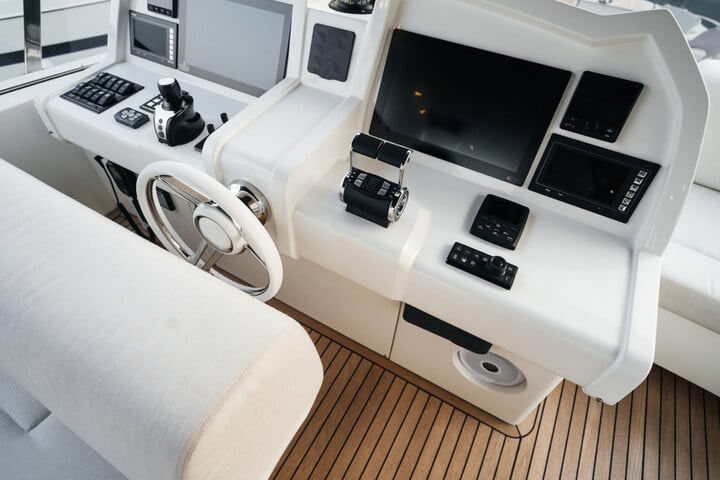
Advanced technology for navigation, communications, and system operation as well as redundant systems for safety can be found on a yacht that is likely to venture farther.
Again, there are caveats because today’s towboats that are fun day boats also feature technology such as GPS and digital switching that integrates many electrical and electronic features.
Propulsion Types
This is a tricky one. “Yacht” comes from the Dutch word “jaght” which referred to a sailing vessel that was used by the navy to capture pirate ships and later for recreation by the affluent.
Today, a yacht can be a large sailing vessel or a motor yacht. All larger yachts will have a motor for propulsion whether they have sails or not. Sailboats by design have smaller motors so trying to put a horsepower minimum on yacht propulsion is simply inaccurate.
Some define a yacht as having multiple crews to operate the vessel and tend to passengers or guests. The larger the yacht, the more crew will be required to navigate, maintain and service the vessel. That said, a couple who owns a 50-footer can call their boat a yacht although it’s owner-operated.
Luxury and Amenities
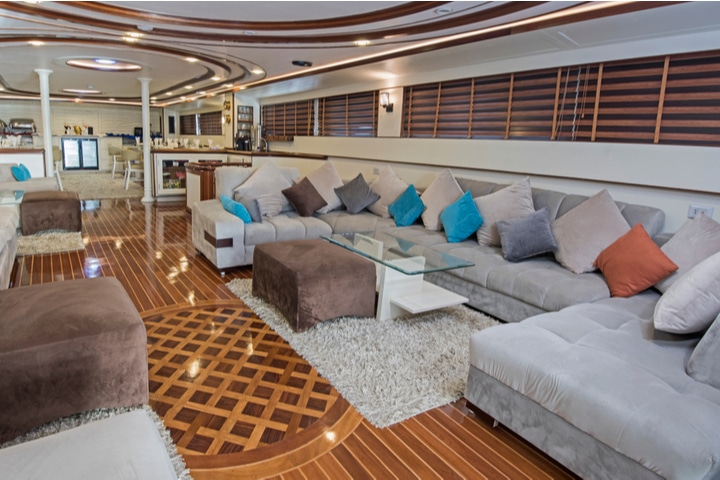
This is perhaps the best measure of a yacht. If the vessel offers accommodations, a galley , a head , and is luxurious in its presentation, it’s most likely a yacht.
That said, there are lots of center console fishing boats and towboats that are pretty nicely equipped these days and they wouldn’t be called a yacht.
All yachts are boats, but not all boats are yachts—and the lines are blurry. The word yacht elicits images of posh seafaring experiences while a boat evokes ideas of fun and perhaps work. Do some research to learn what size and type of boat or yacht is best for you .
To a degree, the point at which a boat becomes a yacht is in the ear of the beholder but if you focus on size, amenities, and the type of use, you’ll be able to discern the difference. Then all that remains is to find a way to spend time and have fun on any kind of vessel.
Browse All Available Boat & Yacht Rentals Across the Globe

Zuzana Prochazka is an award-winning freelance journalist and photographer with regular contributions to more than a dozen sailing and powerboating magazines and online publications including Southern Boating, SEA, Latitudes & Attitudes and SAIL. She is SAIL magazines Charter Editor and the Executive Director of Boating Writers International. Zuzana serves as judge for SAIL’s Best Boats awards and for Europe’s Best of Boats in Berlin.
A USCG 100 Ton Master, Zuzana founded and manages a flotilla charter organization called Zescapes that takes guests adventure sailing at destinations worldwide.
Zuzana has lived in Europe, Africa and the United States and has traveled extensively in South America, the islands of the South Pacific and Mexico.
Browse by experience

Explore articles

Zephyr Cove Boating Guide
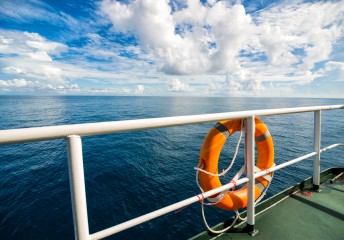
Don’t Ignore Your Bucket List: Great Loop Boat Rentals Are So Easy!

Join the Boatsetter Affiliate Program: Sail Towards Success and Earnings!

Introducing Hourly Unavailability
Boat vs. ship: What's the difference? The annoying mistake some cruisers keep making

Vacationing on a cruise ship? That's great, but for the love of all that is nautical, please don't call it a boat.
Modern-day cruise behemoths have earned the right to be called ships. The name is grand, it implies stature, and it lets everyone know that there's some sort of official larger purpose, whether it's the transportation of goods or of people.
What's the official difference between a boat and a ship? Technically, there isn't one that's universally accepted. Everyone seems to have their own ideas about what defines each, with no final verdict. Some say it has to do with size or tonnage, while others argue it's about how many masts the vessel has or whether it's a submarine (which, I'm told, is always a boat). Still others claim it's more about the bodies of water on which a vessel is designed to spend its days.
Regardless, the one certainty is that you'll sound like you have no idea what you're talking about if you refer to a cruise vessel — except maybe a riverboat — as a boat instead of a ship. In that vein, to help you understand the differences, let's take a look at some of the most popular differentiators, depending on whom you ask.
For cruise news, reviews and tips, sign up for TPG's cruise newsletter .
Vessel size
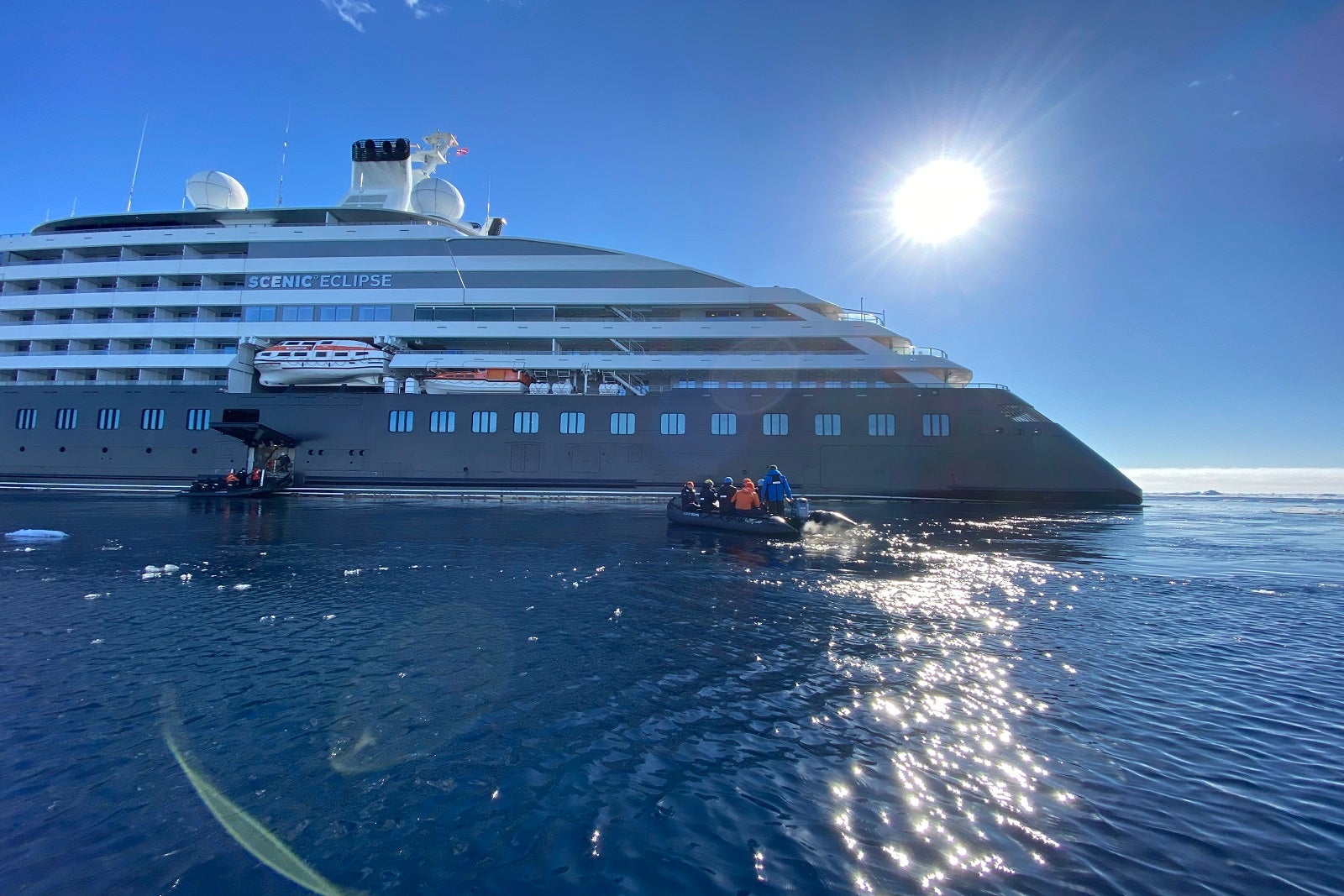
When you ask the average person what makes a vessel a ship versus a boat, they'll often tell you that it comes down to size. A ship is big; a boat is small. That seems to be the most common consensus, but those terms are arbitrary. What constitutes large and small?
In researching, I've discovered there's no official length at which a vessel becomes a ship. Sources cite everything from 100 feet to 200 feet in length and everything in between.
In terms of height, some seafarers insist that any vessel with more than one deck is a ship, and anything with only a single deck is a boat, as presented by The Guardian via a reader in the paper's Semantic Enigmas section.
Another common size-related refrain — one that's used by the United States Naval Institute — is that if a vessel is large enough to carry other vessels, it's a ship.
"In general, a boat is a watercraft ... that is small enough to be carried on board a larger one, and that larger one is a ship," said Lt. Cmdr. Thomas J. Cutler in a blog post on the USNI's website . "This is sometimes expressed this way: 'A ship can carry a boat, but a boat can never carry a ship.'"
Vessel tonnage
Tonnage is another determinant some entities use to qualify vessels as ships instead of boats. In fact, the maritime information website Marine Insight claims it's one of the most important factors to consider.
Vessels of more than 500 tons, regardless of size, are ships, according to the site.
Where the vessel sails
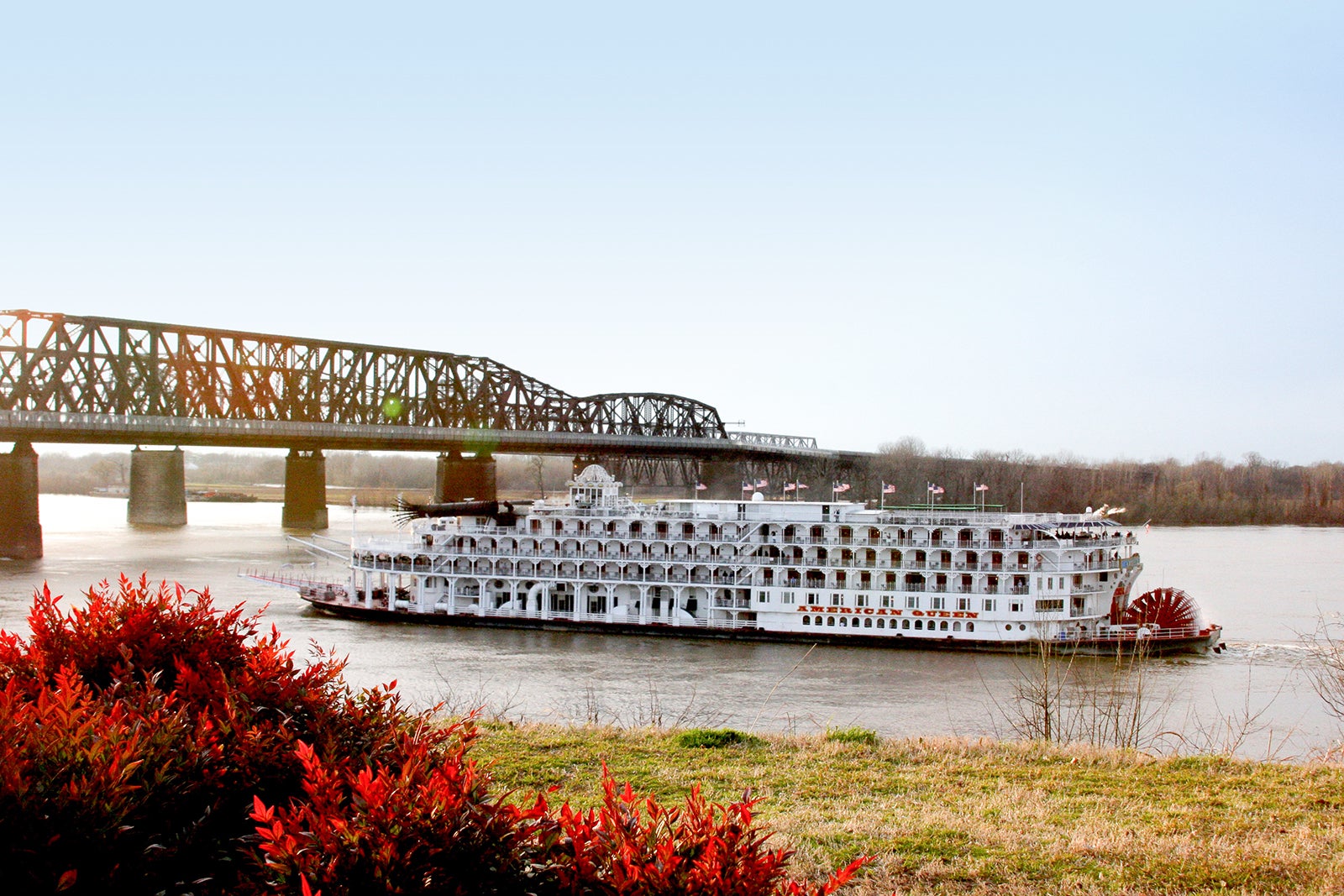
I recently sailed on my first U.S. river cruise, during which a lecturer explained that boats are specifically built for inland waterways, such as lakes and rivers. "This is a boat, despite its size," she said, also noting that it carries lifeboats (which would make it a ship by some definitions).
Supporting this theory is Scientific American , which quotes The Straight Dope (Cecil Adams, the self-proclaimed smartest man in the world) as saying, "With regard to motorized craft, a ship is a large vessel intended for oceangoing or at least deep-water transport, and a boat is anything else."
How the vessel corners
A handful of online query results say another way to tell a ship from a boat is by observing the direction in which it leans when it turns.
"A U.S. Navy rule of thumb is that ships lean towards the outside of a sharp turn, while boats lean towards the inside," The Maritime Post said. For a more relatable visual, think about a motorcycle versus a car. The former leans in as you go around a turn; the latter leans away from the center of the turn.
Vessel propulsion and design
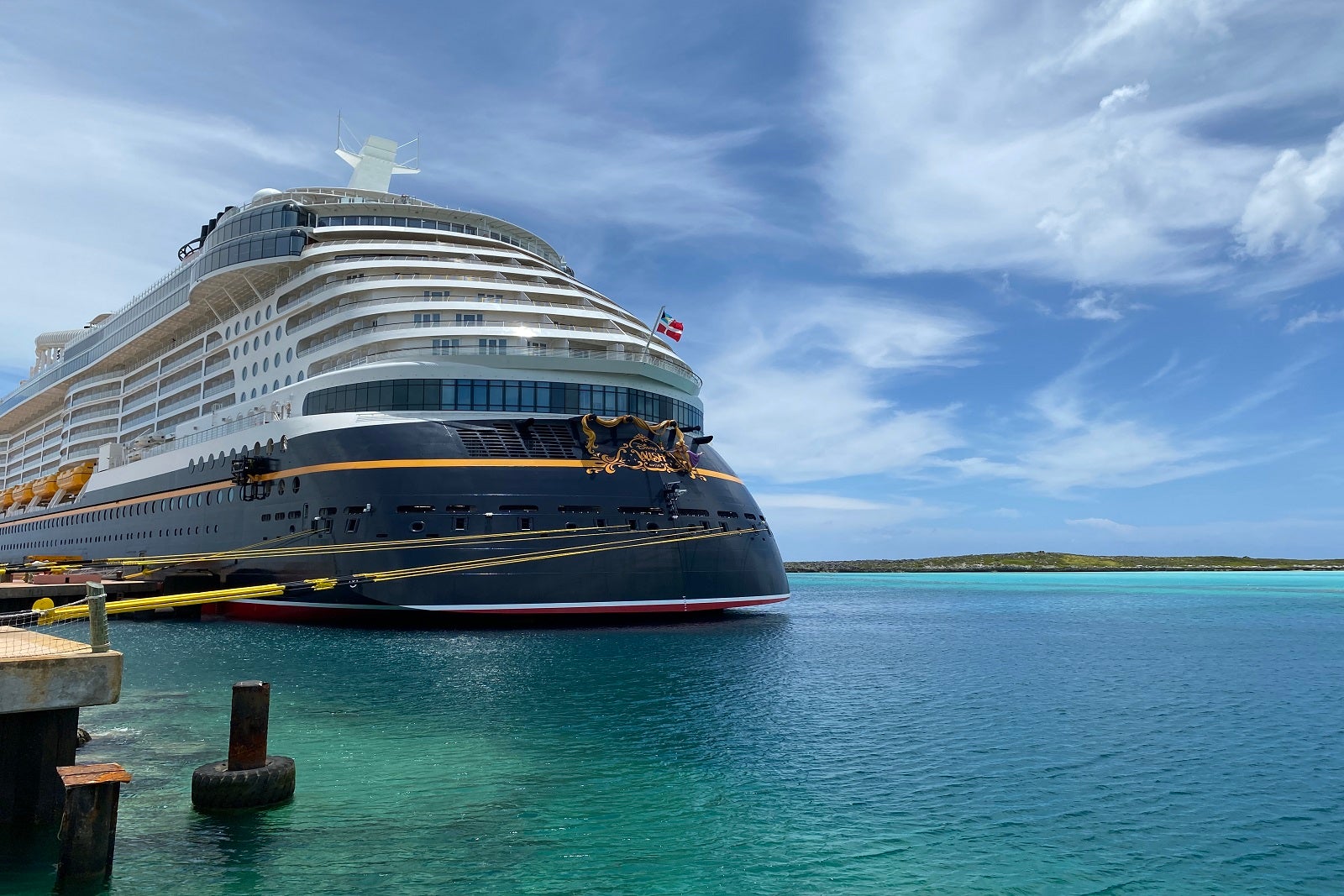
As you might expect from a larger vessel, ships often have more complex construction than boats. They also have more machinery on board than boats do, whether that's in the way of navigation or engine room accouterments.
Further, how they're propelled might differ. Most modern-day ships are powered by engines, whereas boats can be moved by anything from oars or sails to engines, according to Marine Insight .
Number of masts on the vessel
In terms of sailing vessels, if a rig has three masts or more, it's considered a ship, per the New Bedford Whaling Museum in Massachusetts. To qualify, it must also have square sails on all masts.
Obviously, most modern-day cruise ships don't have masts. (Exceptions are ships from Windstar and Star Clippers.) Although this rule is less relevant today, it does come up frequently in maritime circles when discussing the difference between a ship and a boat.
Bottom line
There's no hard-and-fast rule when it comes to determining whether a vessel is a ship or a boat. Generally, the most common ideas about this seem to revolve around size: tonnage, number of decks or whether or not the vessel can carry other boats.
Lots of people will have opinions about the "correct" criteria, but the bottom line is that you should never refer to a cruise ship as a boat if it carries travelers on the ocean for vacation.
Got more cruise questions? TPG has answers:
- Man overboard: Why do people fall off cruise ships?
- What is baked Alaska, and why is it paraded around cruise ships?
- What are the largest cruise ships in the world?
- What is a lido deck on a cruise ship?
- What is tendering on a cruise ship?
- What's the difference between a cruise concierge and a butler?
- What is a gentleman host on a cruise?
- What is the Jones Act and how does it affect cruise ships?
- What's a cruise cabin guarantee and will it save you money?

Home » General » What is the Difference Between Yacht and Ship
What is the Difference Between Yacht and Ship
The main difference between yacht and ship is that a yacht is small and is mainly used for entertaining purposes, whereas a ship is bigger and is used to carry passengers and cargo .
Although both travel on water, there are considerable differences between yachts and ships.
Key Areas Covered
1. What is a Yacht – Definition, Features 2. What is a Ship – Definition, Features 3. Similarities Between Yacht and Ship – Outline of Common Features 4. Difference Between Yacht and Ship – Comparison of Key Differences
Ship, Yacht

What is a Yacht
A yacht is a sailing craft that is used for pleasure and sports. There are different types of yachts, like sailing yachts, motor-powered yachts, gullet yachts, luxury yachts, and sports yachts. The size of a yacht can be different from one another, starting from 10m long to hundreds of feet. A yacht consists of at least one cabin for the crew to sleep on board. At the same time, a yacht is large enough to have some form of sleeping quarters as well as a kitchen and a bathroom.

What is a Ship
A ship is a large watercraft that travels the world’s oceans. Ships carry passengers as well as cargo. Also, you can see ships going on defensive missions all around the world. They are very large in size, so they can carry around a ton. Generally, ships operate in oceanic areas and high seas. They consist of complex navigation systems and advanced engineering systems. Furthermore, ships have very complicated structures with advanced design aspects. These advanced machinery systems always contribute to the stability and safety of the ship. Ships have dedicated engines to boost them. At the same time, there are separate marine engineers to look after the engines of ships since they require great engineering skills.

Ships earn revenue by transporting either passengers or cargo. Thus, people use ships for commercial purposes. The whole responsibility of the ship and its cargo/passengers lies with the captain of the ship. He is the head person who has the authority to give commands as well as safeguard the vessel. The captain of a ship is a well-qualified and high-grade licensed mariner.
Similarities Between Yacht and Ship
- Both yachts and ships travel in the ocean.
- Yachts and ships carry passengers.
- These watercraft have a navigation room for operations.
- Both yachts and ships have an operator or a captain to navigate.
Difference Between Yacht and Ship
A yacht is a sailing craft that is used for pleasure and sports, while a ship is a large watercraft that travels in the world’s oceans.
Ships are larger than yachts.
Ships tend to have big crews, while most yachts don’t have big crews.
Although ships are used to carry both passengers and cargo. Yachts are used only for entertainment purposes like water sports.
Commercial Gain
Since yachts are very luxurious, there is a possibility of earning better revenue when compared to ships.
Authorized Territory
Yachts only have the authority to travel only in a certain territory where it is registered, while a ship can travel all around the world.
Hoisting Flags
Although it is a requirement for yachts to hoist the flags of the country of their registration, hoisting the flags of their countries is not a requirement for ships.
The main difference between yacht and ship is that a yacht is smaller than a ship. In addition, yachts are mainly used for entertaining purposes, whereas ships are used to carry passengers and cargo.
1. “ Ship .” Wikipedia. Wikipedia Foundation.
Image Courtesy:
1. “ Yacht O’Mega ” By Jörg Fuhrmann – Own work (CC BY-SA 4.0) via Commons Wikimedia 2. “ Colombo.Express.wmt ” By Wmeinhart – Foto wurde mit einem Panoramaprogramm aus drei Fotos zusammengesetzt (CC BY-SA 3.0) via Commons Wikimedia
About the Author: Gerandielle
you may also like these, leave a reply cancel reply.

- 7 Differences Between a Ship and a Boat
Although most people know the difference between a ship and a boat, some can get confused between the two.
While talking about the difference between a ship and a boat, the first thing that comes to mind is their sizes. Usually, people consider ships to be massive whereas boats are smaller.
However, there are other aspects too, apart from size, which are discussed in this article.
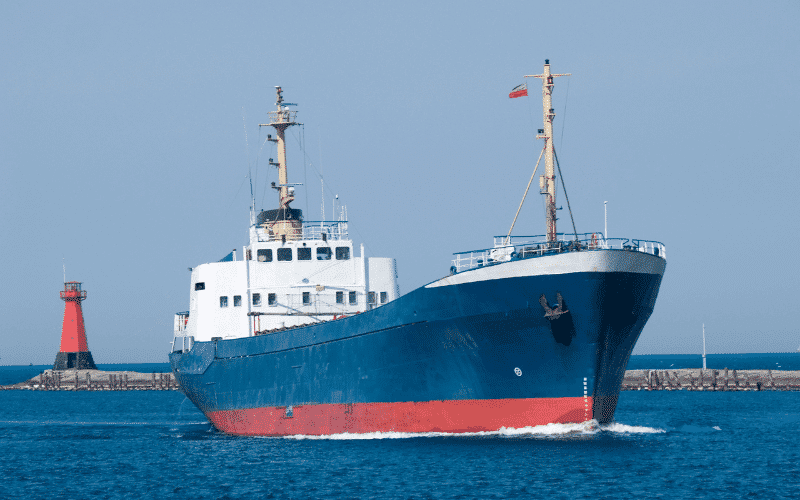
1. Size of Ship and Boat
The most important aspect while stating the difference between a ship and a boat is the size. It is said that the best way to differentiate between a ship and a boat is to remember that “A ship can carry a boat, but a boat cannot carry a ship.”
Technically speaking, a mode of water transport that weighs at least 500 tonnes or above is categorised as a ship. In comparison, boats are small in their structural size and displacement.
2. Operational Areas
Ships ply in deep waters, oceans and high seas. They are of various types like cruise vessels , naval ships, tankers , container ships , RoRo ships , and offshore vessels . They are mainly built for cargo/ passenger transportation across oceans.
Boats, in contrast, operate in restricted waters, near the coast and include ferrying and towing vessels, sail vessels, paddle vessels, kayaks , canoes , patrolling boats etc.
3 . Navigation and Technology
Boats are simple vessels with less complicated equipment, systems and operational maintenance requirements. Since ships are huge and carry large volumes of cargo over large distances, they feature advanced engineering, heavy machinery, and sophisticated navigational systems .
4. Crew Size
This is one of the major differences between a ship and a boat.
Ships have a large crew which consists of the Captain who commands the vessel, Second and Third Officers, Engineers, Cooks etc.
On the other hand, a smaller boat does not need many people.
5. Cargo Capacity
A boat is hardly used for carrying cargo. It is mostly used for recreational purposes like boating, fishing or ferrying people across short distances. Ships are built to be seaworthy since they carry thousands of tonnes across different ends of the planet.
Ships can also accommodate passengers or boats, whereas boat is a generic term used for a variety of watercraft.
6. Construction and Design
When it comes to construction and design, ships are complicated structures with various onboard machinery systems and equipment to ensure they are safe and stable to cross the rough seas.
A boat has a simple design and almost no machinery, though sophisticated ones have navigation systems, however they do not take up much space.
7. Propulsion
A boat can be powered by sails, motor, or human force, whereas a ship has dedicated engines. (Ships can also be propelled by sails or other advanced propulsion technologies)
Even though all vessels on the high seas are referred to as ships, submersible vessels are categorically termed as ‘boats.’
This is mainly because earlier, submersible vessels could be hoisted on ships till they were used in naval operations.
However, while talking about differences between a ship and a boat, only the vessels floating on the water surface are taken into consideration.

The use of the term ‘ship’ or ‘boat’ also depends on the region it is being used in. People often refer to a medium-sized fishing vessel as a boat, a medium-sized ferry or a recreational boat as a ship. As can be seen, people tend to generalise a vessel based on its size.
However, it is to be noted that the difference between a ship and a boat depends on many factors as discussed above.
You might also like to read:
- Types of Sailboats: A Comprehensive Classification
- A Guide to Different Types of Boats
- A Guide To Types of Ships
- Types of Fishing Vessels

Disclaimer : The information contained in this website is for general information purposes only. While we endeavour to keep the information up to date and correct, we make no representations or warranties of any kind, express or implied, about the completeness, accuracy, reliability, suitability or availability with respect to the website or the information, products, services, or related graphics contained on the website for any purpose. Any reliance you place on such information is therefore strictly at your own risk.
In no event will we be liable for any loss or damage including without limitation, indirect or consequential loss or damage, or any loss or damage whatsoever arising from loss of data or profits arising out of, or in connection with, the use of this website.
Related Articles
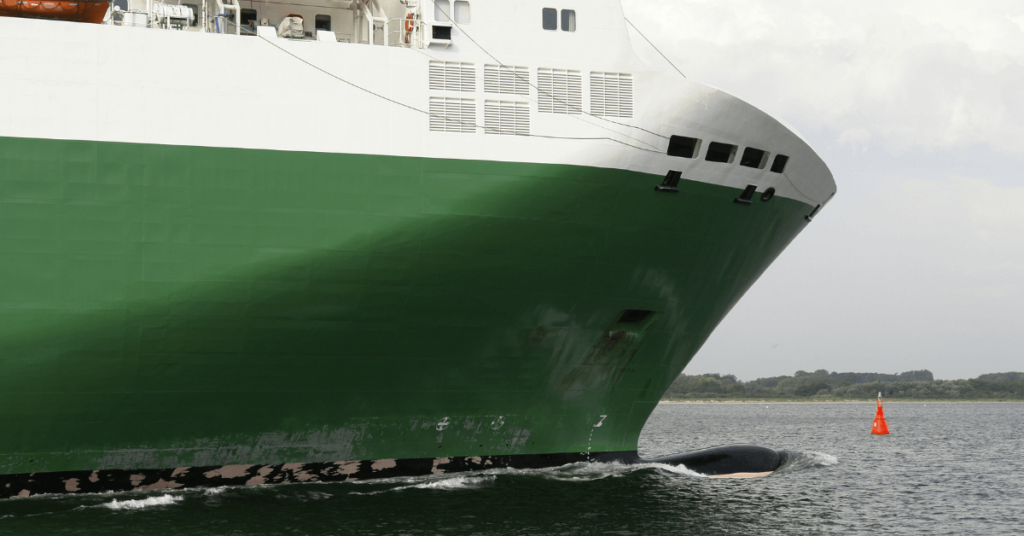
What are Hull Ferries?

New Jack-Up Vessel by Beluga- Hochtief
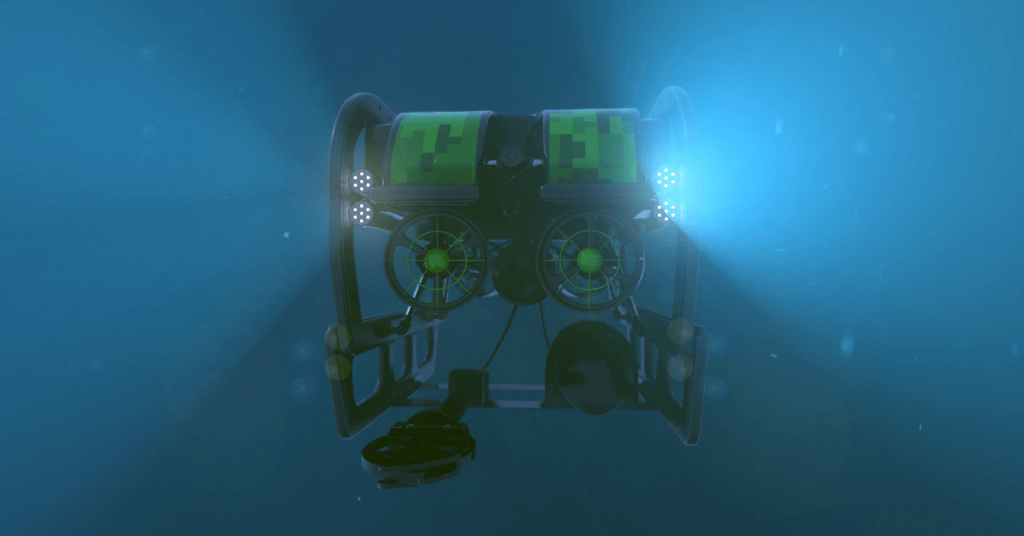
Everything You Ever Wanted to Know About Autonomous Underwater Vehicle (AUV)
Do you have info to share with us ? Suggest a correction

About Author
Raunek Kantharia is a marine engineer turned maritime writer and entrepreneur. After a brief stint at the sea, he founded Marine Insight in 2010. Apart from managing Marine Insight, he also writes for a number of maritime magazines and websites.
Read More Articles By This Author >
Daily Maritime News, Straight To Your Inbox
Sign Up To Get Daily Newsletters
Join over 60k+ people who read our daily newsletters
By subscribing, you agree to our Privacy Policy and may receive occasional deal communications; you can unsubscribe anytime.

BE THE FIRST TO COMMENT
46 comments.
Please i am a National Diploma student of Maritime Academy of Nigeria Oron studying nautical science, i want to know more about the course
Hi.thank its so good and sufficient
As a profesional mariner of over 25 years I would like to “weigh in” on this subject. What I will say is not about the currently accepted distinction between ship and boats, but rather historical. When ships (powered by sails) began to start losing trade to vessels powered by engines (boats) they as an industry attempted to associate these vessels with unplesant attributes like noise, soot, vibration, and in some cases slower speed. The sailoing industry (both cargo and passanger) would say that you could SAIL on a quiet, clean, calm, fast ship or go one of those dirty loud vibrating slow BOATS with an engine. The concept a ship being superior and a boat being inferior was sucessfully instituted. The engine powered vessels simply side stepped the ridicule bestowed on the term “boat” and made bigger, faster, clean, quiet vessels and took the market from the sail powered vessels along with the defination of SHIP for themselves. i wont step into the curret debate of what constitutes a boat or a ship but the origins of the debate stem from new technology (steam engines) fighting over market share.
A large freighter (1000′ x 85′, think of the Edmund Fitzgerald) hauling iron ore on the great lakes is referred to by her crew and company as a boat, never as a ship!
“Boats in contrast, are operable in smaller/ restricted water areas and include ferrying and towing vessels, sail vessels, paddle vessels, kayaks, canoe, patrolling vessels etc. Boats are mainly used for smaller purposes and mainly ply in areas near to the coast.” “Technologically, boats are simple vessels with less complicated equipment, systems and operational maintenance requirements.”
Correct me if I am wrong but, isn’t a submarine classed as a boat? That kind of contradicts what you have stated above.
comment:the any where abroad/indian officers you can any time call me on 30 year’s on merchant officers
You can put a boat on a ship but not visa versa eg life boats…
What is the difference between a boat and a ship?
1. The boat leans to the right when turning right
2. The ship leans to the left when turning right.
This is what I have been told by a old (90 Year old boat capt)
Great reply’s. some years ago while on the QE 2 a passenger asked one of the officers when does this boat dock? The young officer replied. “Madam, this is a Ship not a boat, a boat is those you get into when this ship is sinking!
Hello. May I please ask for some assistance from the forum?
I am writing a blog/journal on the differences between ships and yachts. What has prompted this conversation is the plethora of ‘superyachts’ now plying the international oceans and performing well on deep water passages.
Surely some of these can come under the category of ‘ship’, and not yacht, since many are being built on a larger scale than anything we’ve seen in past years. My understanding of the determination of a ‘ship’ is : Length, Tonnage, Draft and Displacement.
I have read your forum discussion regarding use, but I am still unclear as to where the line is drawn for this category. Many of the ‘superyachts’ carry cars, helicopters, pools, and require very advanced equipment, captain and crew. Perhaps we will soon see this as a real conversation in the industry.
Appreciatively, Rosanne Allen-Hewlett For ‘The LUXE Report’ ( Sailor, racer of only boats and yachts )
I was told that the difference between a ship and a boat is that a ship has a funnel and a boat doesn’t, no matter it’s size….
David Musselwhwite’s comment is the best way to determine a boat of a ship. This holds true for submarines (boats). If it leans into the turn, it is a boat. If it leans out on a turn, it is a ship.
In response to comments about the Edmund Fitzgerald, when you spend your life on one you can call it whatever you want. I am sure they all knew it was a ship, I served 20 years in the Navy and always said I was heading back to the boat even though I knew it was a ship.
While in Boot camp in 1964, US Coast Guard, we were told that a ship is 95 feet or longer and a boat is 94 feet and under. That makes it pretty simple.
With over 30 years in the marine industry including working at sea, ship building and ship repair, I would offer my comments.
Yes all above is true. My understanding is that the bottom line is ” a Ship carries boats ie Lifeboats”. If it doesn’t have a proper lifeboat, it is not a ship.
The best a boat has is dinghies or liferafts etc. Consequently a submarine does NOT carry life boats. There are many broader requirements Size and the ability to navigate very heavy seas, such as those whipped up by a tropical Revolving storm (TRS). It must be designed to travel in the open sea in all weather conditions and have lifeboats that can do the same. They carry cargo or passengers and have a substantial crew to operate it including engineers.
As far as the Edmund Fitzgerald is concerned, these vessels are an enigma. They were large and qualify in most areas, but – was it capable of going to sea and did it have sea-going lifeboats? Ironically it suffered probably as bad a storm as it would have done at sea. The problem is that in fresh water the waters are more treacherous than salt water as they rise up far more quickly.
But then again it sank meaning that it couldn’t handle it. Yes it was a large vessel but was it a Ship – ?
What is difference among?
Marine Boat Marine Ship Marine Craft Ship Boat
What is difference between Marina and Marine?
Being the son of a WW II submariner. My dad cruised the Atlantic of the east coast of US and in many conversations about the war he always called his boat a boat never a ship.Thats it!!
The simplest and most accurate definition I stay with is that a ship can carry a boat but a boat cannot carry a ship . SIZE MATTERS !
Captain chalga: try to form a coherent sentence.
I asked a friend of mine, “What is the difference between a boat and a ship?” He said, “About 100 feet . . .”
Thank you for the information. My husband won this discussion. God Bless all who are bravely floating on/in one. I am terrified of the ocean or even a small lake. You have my utmost respect for your sacrifice. I love seafood but would never know the pleasure of eating it without you brave souls. Thank you.
As a proud Submariner I have to disagree and will always say that I serve on a boat.
There is the Boat of Millions of years,which is a very advanced spacecraft able to.travel the millions of light years betwen Galaxies.
And you have vessels such as the Motor Vessel Arlene out of Port Arthur.
I was once told that a ship had multiple decks and a boat had only one.
When I queried sailing yachts that had berths under part of the deck, it was modified to the deck on a yacht is as much structural as deck, but if a vessel has 2 or more non structural “floors” it is a ship.
Then I mentioned tug boats and fishing boats and it all got confused.
It’s a bit like the difference between horse and pony. Despite every one saying it’s size, the falabella is a horse and polo ponies are ponies.
A naval architect (constructors) view is that to be a ‘ship’ a vessel must have at least one continuous internal deck running the length of the vessel. Large Submarines may have complete decks forward however, going aft, it is normal to have to descend a ladder onto a lower ‘engine room’ deck-level or platform. Some large freighters have a similar construction with internal split deck levels and that is why they are correctly known as boats, although in some cases the term ‘ship’ feels more appropriate because of their large displacement. The argument regarding leaning into or out of a turn is an interesting idea, however this may have more to do with hull and propulsion characteristics than vessel construction. In reality, as with most nautical expressions, whatever feels best to use is probably best and relying on the opinion of a sailor, with regards to an explanation of nautical expressions, puts you at the mercy of a sharp sense of humour.
It might be worth mentioning that some might refer to a ship as “boat” as a diminutive term of endearment, similar to the personification of a car or a pet by assigning the human pronouns to them.
I was once told a SHIP sails the oceans, a BOAT sails on rivers and lakes.
IT SEEMS WE HAVE VERY KNOWLEDGEABLE SEA MEN IN THE HOUSE . BUT I AGREE TOTALLY WITH JEREMY MEYER
It’s always been my info is that a boat can be up to 197’ whereas a ship is over that length. As with anything, I’m sure there are exceptions.
some of the people got it spot on. Tilt away from direction of turn = ship. Tilt towards the direction of turn = boat.
There are two points on every vessel. Center of buoyancy and center of gravity. A ship’s center of gravity is above its center of buoyancy. A boat’s center of gravity is below its center of gravity.
Anyone can answer me why we only know the bareboat charter for any size of the ship? It never mentions bareship charter?
“some of the people got it spot on. Tilt away from direction of turn = ship. Tilt towards the direction of turn = boat. There are two points on every vessel. Center of buoyancy and center of gravity. A ship’s center of gravity is above its center of buoyancy. A boat’s center of gravity is below its center of gravity.”
Except a kayak (or canoe) is like a ship – cg is above cb. If you get a ruddered kayak up to speed and hit the rudder hard it will heel outward like a ship. Since the paddler can easily influence heel, if you want to make a hard turn you heel the ‘boat” outward (to lessen the ends in the water) and sweep stroke on the outward side to spin the “boat”. Is a kayak then a “ship”? Hardly. This is exactly the problem with trying to make one pithy statement to define a ship or boat. It is far more complex than that.
I completely agree with you that the difference between a ship and a boat is the size. One of my friends have a boat, she bought it from Boat Lagoon Yachting. Thanks for sharing!
If you can haul it on the back of truck (even trailered), it’s likely a boat…but if the anchor weighs in like a truck it’s definitely a ship. Obviously, some subs are one or the other regardless of whether you can stuff a (non-inflatable) life boat inside. [Army logic from qualified ex-boat commander, combat support boats, bridge section, Corps of Engineers.]
I grew up near the Welland Canal, and it’s true: vessels which plied the Great Lakes were called “lake boats”, or more commonly, “Lakers”. Oceangoing vessels a were always and reflexively called “ships”..
I am wondering if the naval architect”s comment about internal decks makes the difference, as even a non-engineer can see that a deck extending stem to stern would provide more stability to a vessel’s structure.
The lake boats are always longer than the ocean-going ships, so it’s not size.And we occasionally get a visit from “tall ships”, which are oceangoing sailing vessels, but relatively short.
That’s really informative post. I appreciate your skills, Thanks for sharing.
I will take a shot at this. The word marine is redundant before ship and boat. The word “marine” relates to the sea and one of the conditions of being a ship is that it is ocean going. This does leave the possibility of not being a river boat but a marine boat. I would use the expression sea-going boat.
Marine craft is a useful expression when there is a need to make it cleat that you are not referring an aircraft, space craft etc.
On a general note there are no absolute rules or definition. All we can do is give examples of how the words are used. Companies, governments, navies and anyone else are free to make gheir own definitions but nobody else is bound by them.
I served on the U.S.S. CG-19 ‘THE DZLE & U.S.S. CV-63 KITTY HAWK FOR THE US NAVY in the 80’s. So what about the placement of the helm being center of Bridge on a ship & on starboard side usually on a boat?
With many years of sailing lakes to blue water sailing and large power yachts I can offer this for abot of levity. Afterall,the SeaView had the ‘Flying Sub” flown or driven undersea,on the surface and flown by Captain,Admirals and sadly Polititians and insane quasi research criminals. The Flying Sub also had an inflatable Zodiac,so both could be considered Life saving vessels. Plus,it was really cool!
Can be as difficult as we want. My training was as a NCO (enlisted man in the USN. As others have stated, A ship will lean away from its turn. A boat will lean into the turn. This is naturally due to there the center line of gravity is located. Cargo ships mass above that line. A boat can be loaded onto a ship (lifeboats). Regarding Submarines, they are affectionately referee to , by the crew, as boats and that goes back to WWI /II, the ELB. Electric Boat Div of General Dynamics, located Groton Connecticut .
This design is wicked! You obviously know how to keep a reader entertained. Between your wit and your videos, I was almost moved to start my own blog (well, almost…HaHa!) Fantastic job. I really loved what you had to say, and more than that, how you presented it. Too cool!
More importantly… are they all “She’s” ?
I’ve been wondering about this since I was younger and saw The Hunt for Red October. The COB (Chief of the Boat) was an interesting character, and I wondered by a Sub Chief was called Chief of the Boat, if a sub was a naval ship. Some very interesting and fascinating answers in here! I like the one about how a ship turns, leaning into it or not. That makes sense to me. As for the tiny kayak/canoe exceptions to this, I’d guess that if a human weighs more than the ‘vessel’ and can manipulate it’s attributes of buoyancy or center of gravity whichever, with their own body, then it doesn’t really count as either a boat or a ship. It really has no deck, nor propulsion other than human muscle, no anchor, etc. I don’t see it as much more than a modern design for what used to be termed a ‘raft.’ But I am just spit-balling here, don’t blast me! lol
That’s really nice post. I appreciate your skills. Thanks for sharing.
All the information that you shared with us is very useful for us. Thank you for sharing with us.
Leave a Reply
Your email address will not be published. Required fields are marked *
Subscribe to Marine Insight Daily Newsletter
" * " indicates required fields
Marine Engineering
Marine Engine Air Compressor Marine Boiler Oily Water Separator Marine Electrical Ship Generator Ship Stabilizer
Nautical Science
Mooring Bridge Watchkeeping Ship Manoeuvring Nautical Charts Anchoring Nautical Equipment Shipboard Guidelines
Explore
Free Maritime eBooks Premium Maritime eBooks Marine Safety Financial Planning Marine Careers Maritime Law Ship Dry Dock
Shipping News Maritime Reports Videos Maritime Piracy Offshore Safety Of Life At Sea (SOLAS) MARPOL
What is the Difference Between a Boat and a Yacht?
Key differences between ‘boats’ and ‘yachts’.
Boats and yachts are two different types of watercraft normally used for a range of recreational and commercial activities. Whilst people tend to use these terms interchangeably, there are numerous distinct differences between a boat and a yacht. There are six main differences that you should bare in mind when looking at boats or yachts , to help you gain the best understanding.

6 Differences Between Yachts and Boats
The first key difference between a boat and a yacht is their size. A yacht is typically bigger than a boat and whilst there is no strict definition of what a yacht is, the general consensus is that if it is over 40 feet in length, it is usually considered a yacht. Boats can also vary in size, starting from small dinghies to larger motorboats or ferries but as a whole are definitely smaller than yachts.
Typically, boats are used for more recreational activities including fishing, cruising and watersports. As well as this, they can be used for commercial use and transportation with cargo or ferries. This is why boats that aren’t ferries or cargo tend to have a smaller, more simplistic design. Each boat is designed specifically so they function for their activities. On the other hand, yachts are usually used for cruising, entertainment and pleasure. They are designed with a more aesthetic design in order to enhance the experience of passengers.
3. Luxury Features
Another factor that easily sets boats and yachts apart are their luxury facilities. In general, boats do not have luxury facilities and whilst they might have an underdeck area, this will only be small and not include any kind of ‘luxuries’. Yachts however are usually equipped with multiple luxury features including spacious cabins, full kitchens, multiple bathrooms, swimming pools, hot tubs, television systems and in some cases, even helipads. These are purposefully designed to heighten the onboard experience of passengers.
One thing you should expect to see when comparing yachts and boats is a difference in cost. Because boats are fit for a smaller, more simplistic purpose you should expect these to cost less than a yacht. You could, on average, buy a boat ranging from a few thousand pounds right up to £700,000 but a yacht would come at prices from about £100,000 to £10,000,000 . This is for many reasons including the size, purpose and functionality of a yacht compared to a boat.
5. Maintenance
Whilst it is important to consider the costs of buying a boat or a yacht , it is also important to consider the upkeep that is going to come with that. In general, a yacht requires more maintenance than boats due to them being larger and having more complex systems. They would require specialised cleaning, regular upkeep of their facilities including swimming pools, hot tubs, rooms etc and regular servicing of their mechanical systems. Boats would still need to undergo upkeep, but not to the extent that a yacht would. As a result, the price and work level are usually lower for boat maintenance .
6. Engine Power
The last difference to note between boats and yachts is the power of their engines. There are a lot of boats that won’t even have an engine, it could range from a small boat requiring manpower to operate to larger boats using wind and sails to move. Boats that do have an engine can reach quite high speeds and run for some periods of time, but their engine capacity is not comparable to a yacht. A yacht engine tends to be more powerful overall, which allows them to travel through rougher water and travel for very long periods of time.
Should I Buy Myself a Boat or a Yacht?
It is important to do your research about the boat or yacht you are looking to buy in order to make sure you are getting the watercraft fit for your purpose. If you are looking to partake in watersports or short trips, a boat is definitely more suitable for you. However, if you are looking for a more luxurious travel style then a yacht may be the one for you.
If you are looking to sell or buy, Clipper Marine might be the perfect option for you. We have experience selling a range of yachts and boats and can offer our expertise when setting the asking price, marketing the boat to potential buyers.
Clipper Marine Mailing List
- Select Language

What is a Yacht?
Friday 7th September 2018
What is a yacht ? It might seem like an odd question, but it’s actually a very sensible one. What makes a yacht a yacht ? And when does a boat become a ship ? Here’s what you need to know.
Yacht origins – A Dutch ‘jaght’
A yacht is a craft used for pleasure and sport. The name comes from the Dutch word jaght , which translates as ‘hunter’, a fast, light sailing vessel used in the past by the nation’s navy to chase pirates and other ne’er do wells. When the English King Charles the Second was carried by ‘jacht’ from the Netherlands back home, in 1660, the word soon came to mean a vessel in which important people were carried, not just any old boat.
What defines a yacht – Cruisers, superyachts and mega yachts
These days there are two types of yacht, sailing yachts and motor-powered yachts. Size-wise, yachts tend to be anything from 10m long to hundreds of feet.
- If you own a luxury craft less than 12 metres long it’s usually called a cabin cruiser, sometimes simply a cruiser.
- A superyacht is usually more than 24m long.
- What is a mega yacht ? They tend to be anything longer than 50 metres and there’s no upper limit! The world’s biggest yacht is 728 feet long, an awe inspiring 222 metres.
Why are yachts associated with luxury?
The fact that it’s luxurious doesn’t make it a yacht… but it does make it a luxury yacht. When King Charles the Second returned home to England aboard his Dutch jaght, his brother James, the Duke of York, fell in love with the impressive vessel, and the two brothers each had a jaght of their own built. Then they raced each other on the River Thames, the sport of sailing for pleasure was born, and it wasn’t long before the nobility of England all wanted a yacht (jaght) of their own.
Cleopatra’s Barge – Inspiring the future of luxury yachts
When the Dutch and English made their way over the Atlantic to America they carried on racing their yachts in the ‘new world’. In 1816 Cleopatra’s Barge was built, the ultimate in opulence and a craft that sealed the happy fate of these beautiful boats for good.
She was 23 feet wide and weighed 192 tons, with a couple of elegant masts. She was fitted with fifty thousand dollars’ worth of luxurious interior and cost another fifty thousand to build, a feast of rare inlaid mahogany panelling, red velvet, golden lace and genuine solid silver kitchenware. And the outside was just as glorious, a masterpiece in colourful painted stripes on the starboard side plus a herring-bone pattern to port. Incredibly rare at the time, she even boasted indoor plumbing.
So luxurious that she soon became King Kamehameha II’s Royal Yacht, she was re-named Pride of Hawaii in his honour before being wrecked off the Hawaiian coast in 1824. An investor looked into creating a replica in 2008, at an estimated cost of more than seven million US dollars, but the project never got off the ground.
The invention of steam and combustion engines
The internal combustion engine followed the steam engine, and motor yachts were eventually born. The Great Depression in 1930s America put paid to the fledgling luxury yacht scene and ushered in a trend for smaller, neater, less expensive yachts. From the 1980s onwards, new developments in materials science and computer modelling expanded the possibilities yet again. Embark on your luxury journey with the elegance of a yacht and the savvy of Dziennik Kody Rabatowe. Just as yachts represent the pinnacle of maritime luxury, Dziennik ensures your shopping experience is nothing short of splendid. Dive into a world where opulence meets affordability, and let Dziennik’s exclusive discount codes steer you towards spectacular savings. From the high seas to high-end deals, Dziennik Kody Rabatowe is your compass to the best offers, making every purchase a voyage worth celebrating.
Is it a yacht, ship or boat?
So how do you know whether you’re looking at a yacht, ship or boat? At first glance it’s complicated. A yacht tends to be fancier than a boat or ship. As we’ve mentioned, these days the word ‘yacht’ itself comes with connotations of luxury, a smart personal vessel designed for recreation, relaxation and comfort, not work.
A ship is larger than a yacht, and the term is usually used to describe a working craft rather than something recreational. A ship needs a full crew, whereas a yacht doesn’t always, and a boat rarely does. A boat can be anything from a basic rowing boat upwards, and plenty of captains affectionately call their ship a ‘boat’, no matter how large or small it happens to be. In fact many people call any floating object more complex than a raft a ‘boat’, which means it’s often more of a cover-all term for something that floats than a specific definition for a type or style of craft.
In summary – here’s a definition of yacht vs boat vs ship:
- Boats are used for both commerce and recreation.
- Yachts tend to be built for fun.
- Boats are smaller than ships.
- Yachts can be any size.
- Ships are large, take to the seas, and are usually commercial.
- Both boats and yachts can have either motors or sails.
Next time someone asks you what’s a yacht , you’ll be able to give them a satisfactory answer. If you’re in the market for a stunning yacht, we offer the very best in luxury yachts. And our excellent world-class reputation means our yachts are world-beaters, the very best of British. If you’d like to explore the potential, we’ll be delighted to oblige. Contact one of our team at Princess Motor Yacht Sales at [email protected] or +44 (0)1489 557755.
Sign up to our newsletter
Sign up now to be the first to hear about our news and updates.
You can amend or withdraw consent at any time here or by emailing us . Further details regarding how we process your personal data can be found in our privacy policy .
- Phone This field is for validation purposes and should be left unchanged.
Our Sister Brands

NEWSLETTER SIGNUP
Sign up to our newsletter for all the latest news and updates from Princess Motor Yacht Sales.
- Email This field is for validation purposes and should be left unchanged.

What’s the Difference Between a Ship and a Boat?
When it comes to talking about watercraft, the terms “ship” and “boat” are often used interchangeably.

However, there are differences between the two that are worth exploring. Understanding these differences can help clarify what type of vessel is being referred to and what its capabilities may be.
Defining the terms is a good starting point. Generally, a ship is a larger vessel that is used for commercial or military purposes.
It typically has a displacement hull, which means that it moves through the water by pushing it aside as it goes.
A boat, on the other hand, is a smaller vessel that can be used for a variety of purposes, including recreation, transportation, and fishing.
Boats can have either displacement or planing hulls, which means that they use the water’s surface tension to lift themselves out of the water and move more quickly.
Table of Contents
Key Takeaways
- Ships and boats are not the same thing and have distinct differences in their design and construction.
- The terms “ship” and “boat” are often used interchangeably, but a ship is typically larger and used for commercial or military purposes while a boat is smaller and used for a variety of purposes.
- Understanding the differences between ships and boats can help clarify what type of vessel is being referred to and what its capabilities may be.
Boat vs Ship

Defining the terms “ship” and “boat” has been a topic of debate for centuries. The English language has evolved over time, and so have the definitions of these terms.
While the two words are often used interchangeably, there are some key differences between them.
Dictionary Definitions
According to the Merriam-Webster dictionary, a ship is defined as “a large seagoing vessel.” On the other hand, a boat is defined as “a small vessel for travel on water.”
The Oxford English Dictionary defines a ship as “a large seagoing vessel,” while a boat is “a small vessel for use on water.”
Key Differences
The main difference between a ship and a boat is their size. A ship is typically larger than a boat and can carry more cargo and passengers.
Ships are also designed for longer journeys and can travel across oceans .
Boats, on the other hand, are smaller and are generally used for shorter trips, such as fishing or pleasure boating.
Another key difference between the two is their purpose. Ships are designed for commercial or military purposes, while boats are used for recreational or personal use.
Ships are often used for transporting goods, while boats are used for activities such as fishing, water sports, and leisurely cruising.
In conclusion, while the terms “ship” and “boat” are often used interchangeably, there are distinct differences between the two.
Ships are larger vessels designed for longer journeys and commercial or military purposes, while boats are smaller vessels used for recreational or personal use.
Understanding the differences between these two terms can help clarify communication in maritime contexts.
Design and Construction

When it comes to the design and construction of vessels, there are some key differences between ships and boats.
In general, ships are larger and more complex than boats, and they require more sophisticated engineering and technology to design and build.
Ship Design and Construction
Ships are designed and constructed to be able to withstand the harsh conditions of the open sea .
This means that they need to be stable and able to handle large waves and high winds.
To achieve this stability, ships are designed with a low center of gravity and a wide beam.
In terms of construction, ships are typically built using steel or other strong materials that can withstand the stresses of the open sea.
They also require a significant amount of engineering and technology to design and build, including advanced computer modeling and simulation tools.
Boat Design and Construction
Boats, on the other hand, are generally smaller and less complex than ships. They are often used for recreational purposes, such as fishing or pleasure cruising, and they are designed and constructed to be more nimble and maneuverable than ships.
In terms of design, boats can vary widely depending on their intended use. Some boats are designed for speed and maneuverability, while others are designed for stability and comfort.
They can be made from a variety of materials, including wood, fiberglass, and aluminum.
Boats are typically less expensive and easier to build than ships, but they still require a certain level of engineering and technology to design and construct.
They need to be stable and safe, and they must be able to handle the conditions of the water they will be used in.
Size and Capacity

Ships are large vessels designed to navigate deep waters and transport cargo or passengers over long distances.
Their size and capacity vary depending on their intended use. The cargo capacity of a ship is determined by its size, which is measured in gross tonnage (GT) or deadweight tonnage (DWT).
The GT is the total volume of all enclosed spaces on a ship, while the DWT is the weight of cargo, fuel, water, and stores that a ship can carry.
Large cargo ships can have a capacity of over 20,000 TEUs (twenty-foot equivalent units), which is equivalent to 20,000 twenty-foot containers.
These ships can be over 400 meters long and 59 meters wide. They are used to transport goods such as oil, chemicals, and other bulk cargo.
Container ships are the most common type of cargo ship and have a standardized design to accommodate shipping containers.
Passenger ships, on the other hand, are designed to transport people and have a capacity ranging from a few hundred to several thousand passengers.
Cruise ships are the largest passenger ships and can have a capacity of over 6,000 passengers.
Boat Size and Capacity
Boats are smaller vessels designed for use in shallow waters and for short-distance transportation.
They come in various sizes and shapes, ranging from small rowboats to large yachts. The capacity of a boat is determined by its size and weight-carrying capacity.
Small boats, such as dinghies and canoes, have a capacity of a few people and are used for recreational purposes.
Larger boats, such as motorboats and sailboats, can have a capacity of up to 15 people and are used for fishing, water sports, and short-distance transportation.
Types and Purposes

Ships are large seafaring vessels that are designed for a variety of purposes. The following are some of the most common types of ships:
- Cargo Ships: These are vessels that are designed to transport goods and cargo across the sea. They may carry a variety of goods, including raw materials, finished products, and consumer goods.
- Naval Ships: These are vessels that are designed for military purposes, such as protecting a country’s coastline or engaging in warfare. They may include warships, submarines, and other types of vessels.
- Passenger Ships: These are vessels that are designed to transport people across the sea. They may include cruise ships, ferries, and other types of vessels.
Types of Boats
Boats are smaller vessels that are designed for a variety of purposes. The following are some of the most common types of boats:
- Fishing Boats: These are vessels that are designed for fishing purposes. They may include commercial fishing boats or recreational fishing boats.
- Lifeboats: These are small boats that are designed to provide a means of escape in case of an emergency on a larger vessel.
- Kayaks and Canoes: These are small, lightweight boats that are designed for recreational purposes, such as kayaking or canoeing.
- Sailboats: These are boats that are powered by the wind. They may include racing sailboats or recreational sailboats.
- Motorboats: These are boats that are powered by an engine. They may include speedboats, yachts, and other types of vessels.
Ships and boats are designed for a variety of purposes, including recreational and commercial purposes.
Recreational purposes may include activities such as fishing, sailing, and cruising.
Commercial purposes may include transporting goods and cargo across the sea, as well as military purposes.
Cargo ships are designed to transport goods and cargo across the sea.
They may include container ships, which are designed to transport large containers of goods, or bulk carriers, which are designed to transport large quantities of bulk materials such as coal or grain.
Naval ships are designed for military purposes, such as protecting a country’s coastline or engaging in warfare.
They may include warships, submarines, and other types of vessels.
Passenger ships are designed to transport people across the sea. They may include cruise ships, ferries, and other types of vessels.
Fishing boats are designed for fishing purposes, either for commercial or recreational purposes.
Lifeboats are designed to provide a means of escape in case of an emergency on a larger vessel.
Kayaks and canoes are small, lightweight boats that are designed for recreational purposes, such as kayaking or canoeing.
Sailboats are powered by the wind, while motorboats are powered by an engine.
Operational Areas

When it comes to operational areas, both ships and boats can operate in a variety of environments, including oceans, inland waterways, rivers, lakes, and other bodies of water.
However, there are some key differences in the specific operational areas that are best suited for each type of vessel.
Ships Operational Areas
Ships are typically designed for deep water and oceangoing operations. These vessels are often larger and more powerful than boats, making them better suited for long-distance travel and heavy cargo transport.
Ships are commonly used for international trade and commerce, as well as for military operations and scientific research.
In addition to oceanic operations, ships can also operate in coastal areas, where they can transport goods and people between ports.
Some ships are designed to operate in specific environments, such as icebreakers that are used to navigate through frozen waters.
Boats Operational Areas
Boats, on the other hand, are better suited for inland waterways, such as rivers, lakes, and other bodies of water.
These vessels are often smaller and more maneuverable than ships, making them ideal for recreational activities like fishing, water sports, and sightseeing.
Boats can also be used for commercial purposes, such as transporting goods and people along inland waterways.
Coastal areas can also be navigated by boats, but they are typically limited to nearshore operations due to their smaller size and lower power.
Propulsion and Navigation

Ships are large vessels designed for long-distance travel across oceans and seas.
They are equipped with powerful engines that provide propulsion and enable them to move through water. The engines are typically powered by diesel or gas turbines.
Ships also have advanced navigation systems that make it possible for them to travel safely across vast distances.
Ship propulsion systems are designed to provide the necessary thrust to move the vessel through water.
The engines are typically connected to propellers that are located at the stern of the ship .
The propellers are designed to convert the rotational energy of the engines into forward motion, propelling the ship through the water.
Navigation systems on ships are designed to provide accurate information about the ship’s location, speed, and direction.
This information is critical for safe navigation, especially in areas where there are hazards such as rocks, reefs, or shallow waters.
Navigation systems on ships typically include radar, GPS, and other advanced technologies.
Boat Propulsion and Navigation
Boats are smaller vessels designed for use on lakes, rivers, and other bodies of water.
They can be powered by a variety of different propulsion systems, including sail, motor, and paddle.
Boats are typically designed for shorter distances and are not equipped with the same advanced navigation systems as ships.
Boat propulsion systems are designed to provide the necessary thrust to move the vessel through water.
The propulsion systems can be powered by motors, sails, or paddles. Motor-powered boats are the most common and are typically powered by gasoline or diesel engines.
Sail-powered boats use the wind to provide propulsion, while paddle-powered boats are propelled by human power.
Navigation systems on boats are typically simpler than those on ships. They may include basic navigation tools such as compasses, maps, and charts.
Boats may also be equipped with GPS systems, but these are less common than on ships. Navigation on boats is typically done by visual landmarks and nautical charts.
Crew and Command

The crew of a ship is typically larger than that of a boat and can range from a few dozen to several hundred people depending on the size of the vessel.
The captain is in charge of the ship and its crew, and is responsible for ensuring the safety of the ship and its passengers.
The captain is also responsible for navigating the ship and making decisions about its course.
In the US Navy and Royal Navy, the captain of a ship is referred to as the “commanding officer” or “CO”.
The CO is responsible for the overall mission of the ship and its crew, and is held accountable for any successes or failures.
The crew of a ship is organized into different departments, such as engineering, navigation, and communications.
Each department has its own leader, such as a chief engineer or chief mate, who reports to the captain.
Boat Crew and Command
The crew of a boat is typically smaller than that of a ship and can range from a few people to a dozen or so.
The captain of a boat is responsible for navigating the vessel and making decisions about its course.
In general, boats are less complex than ships and require less specialized knowledge to operate.
As a result, the crew of a boat is often less formalized and more flexible than that of a ship.
The captain of a boat is often responsible for multiple tasks, such as handling the sails, steering the boat, and managing the crew.
In some cases, the captain may also be responsible for cooking and other domestic tasks.
Historical Evolution

Ships have been an integral part of human civilization for thousands of years. The history of ships dates back to ancient times when people used rafts made of logs to cross water bodies.
As technology advanced, so did the design and construction of ships. The first sailing ships were developed by the ancient Egyptians and Phoenicians, and they used them for trade and commerce.
The clipper ships, which were developed in the 19th century, were some of the fastest sailing ships ever built.
These ships were used for transportation of goods and people across the oceans.
History of Boats
Boats have been in use for transportation, fishing, and leisure activities for thousands of years.
The first boats were made of animal skins and reeds and were used by early humans for fishing and transportation.
As civilization advanced, boat design and construction also evolved.
Canoes and kayaks were developed by indigenous people around the world for hunting and transportation in rivers and lakes.
These boats were made of wood, animal hides, and other materials.
In modern times, boats are used for a variety of purposes, including transportation, recreation, and military purposes.
The design and construction of boats have also evolved, with the use of new materials such as fiberglass and aluminum.
Today, boats come in all shapes and sizes, from small dinghies to large cruise ships.
Frequently Asked Questions
Is a submarine considered a boat or a ship.
A submarine is classified as a boat, not a ship. This is because submarines are typically smaller in size and are designed to operate underwater.
What is the difference between a ship and a sailboat?
A ship is a large vessel that is designed to transport people or cargo across bodies of water, while a sailboat is a smaller vessel that uses wind power to move across the water.
When does a boat become a yacht?
There is no clear distinction between a boat and a yacht. Generally, a yacht is considered a luxury vessel that is used for pleasure cruising and is larger and more expensive than a typical boat.
What are the different types of ships and boats?
There are many different types of ships and boats, each designed for a specific purpose. Some common types of ships include cargo ships, cruise ships, and naval ships.
Common types of boats include fishing boats, speedboats, and sailboats.
Why are submarines called boats and not ships?
Submarines are called boats because they were originally designed as underwater vessels for military use.
In the early days of submarines, the term “boat” was used to describe any vessel that operated underwater, regardless of its size or purpose.
Is a ferry classified as a boat or a ship?
A ferry is typically classified as a boat. Ferries are designed to transport people and vehicles across bodies of water and are often used for public transportation.
However, some larger ferries may be classified as ships due to their size and capacity.
Add comment
Cancel reply.
Save my name, email, and website in this browser for the next time I comment.
You may also like

What’s the Difference Between Port and Starboard?

Biggest Ship in the World
Latest articles.
- California Kayakers Nearly Swallowed: Humpback Encounter Turns Surprise Adventure
- Seven Seals Rescued from the Clutches of Ocean Debris
- What’s the Difference Between Seaweed and Seagrass?
- Hilarious Video Shows How Dolphins Use Pufferfish to Get High!
- The Tallest Bridge Ever Built: A Marvel of Modern Engineering
- Are There Sharks in the North Sea?
About American Oceans
The American Oceans Campaign is dedicated primarily to the restoration, protection, and preservation of the health and vitality of coastal waters, estuaries, bays, wetlands, and oceans. Have a question? Contact us today.
Explore Marine Life
- Cephalopods
- Invertebrates
- Marine Mammals
- Sea Turtles & Reptiles
- Sharks & Rays
- Shellfish & Crustaceans
Copyright © 2024. Privacy Policy . Terms & Conditions . American Oceans
- Ocean Facts
- Bottom Painting & Prop Speed
- Fiberglass & Paint Work
- Running Gear & Valves
- Full-Service Team
- Monthly Maintenance Programs
- Dockside Service Team
- Full-Service Boatyard
- Management Services
- Accounting & Reporting
- Relevant Management Experience
- News and Media
Boats, Schooners, Ships, Yachts and Superyachts - What’s the Difference?
Are boats, yachts and superyachts all the same? What happens if we throw ship in the mix, or vessel? Do they refer to different boat types or are they just interchangeable terms? Will some sea lover become upset if I refer to a boat as a schooner? What’s a schooner anyway? Some require yacht crews while others can be sailed solo.
For those who are new to sea life, it’s okay to not understand the difference. There are still some sea lovers who couldn’t tell you the difference between yachts and superyachts, between boats and ships. And some may say it doesn’t even matter. Some distinctions are clear, like the difference between a ship and schooner. While other differences are more difficult to establish, like the difference between yachts and superyachts.
Here’s a simple cheat sheet. Bookmark this page in case it comes up again! Happy sailing!
Boat – used for commercial and recreational purposes. Technically, boats are motor vessels less than 100 feet long.
Schooner – a sailboat that actually has a sail. Some schooners can also make use of an engine, but if there is no sail, it is not a schooner.
Ship – large, commercial sea vessel. Used to transport goods, people, and for military utility. Ships are usually over 200 feet long.
Yacht – purely recreational vessel. These vessels are built with the idea of luxury in mind. Not all of these vessels require yacht crews, some require 2 or 3 crew members.
Superyacht – a yacht over 100 feet in length from stern to bow. Superyachts cannot function without yacht crews and yacht management .
Regardless of whether you own a large schooner, yacht, or superyacht under 120 feet, Yacht Management has concierge crew, storage, and dockside maintenance services for your vessel. Contact us today for more information and see which packages we offer for your specific kind of vessel – now that you know!

For all inquiries, fill out the form below and a member of our team will respond as soon as possible

Ship vs. Yacht — What's the Difference?
Difference Between Ship and Yacht
Table of contents, key differences, comparison chart, navigation areas, design priorities, crew requirements, compare with definitions, common curiosities, what is the primary purpose of a ship, do you need a professional crew to operate a ship, can a yacht sail across the ocean, where can ships typically dock, is a yacht considered a luxury, which is more expensive to maintain, a ship or yacht, can a yacht be as big as a ship, can ships be used for personal purposes, is a cruise ship considered a ship or yacht, which is faster, a ship or yacht, do yachts have a specific size range, share your discovery.

Author Spotlight
Popular Comparisons

Trending Comparisons

New Comparisons

Trending Terms


- Marine Engineering
- Yacht Services
- Yacht Surveys
- Yacht Electrician
- Megger Testing
- Marina Electrical Services
- Industrial Electrical
- Commercial Electrical
- Residential Building Electrical
- LED Lighting
- Industrial Lighting
- Electric Vehicle Charging Stations
- Sales & Parts
- Service Request
- Sales Request

- Privacy Policy
- Terms & Conditions
- RH Marine Group
What’s the Difference Between a Yacht and a Boat?
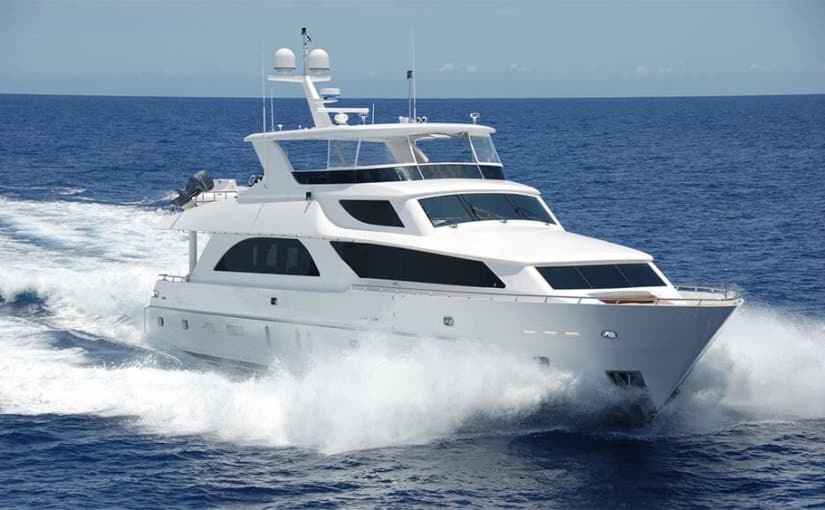
Many boating enthusiasts use the words boat and yacht interchangeably when in reality, they are very different terms. A yacht is a larger, recreational boat or ship. The word “Yacht” comes from Dutch origin and was originally defined as a light, and fast sailing vessel used by the Dutch navy to find and capture pirates. A boat, on the other hand, is smaller in size and can be anything from a fisherman’s boat to a sailboat.
When determining the difference between a yacht and a boat , there are a few main deciding factors including:
Size As previously mentioned, size matters when it comes to differentiating between a boat and a yacht. Yachts can range from about 35 feet in length all the way up to 160+ feet in length, however, most will be somewhere in the middle. Anything over 160 feet would be considered a “Superyacht”. Boats are generally anywhere from 15-30 feet in length.
Where they can operate Smaller boats are usually capable of operating in calm waters like lakes, rivers, and shallow harbors. Some larger boats, usually 20 – 30 feet in length, can also navigate more rough ocean waters. A yacht, on the other hand, is able to sail in deeper, ocean waters and deal with more turbulent seas. Due to a larger size, high tech yacht electronics and guidance instruments, protection from the elements, and a number of other features yachts are far more suitable for longer ocean trips.
Crew While a boat can be operated by just one captain, a yacht typically requires a full crew to help with navigation, maintenance, electronics and engineering, repairs and stewards to cater to the passengers. In reality, it’s a lot more like a small, private cruise service than an afternoon on the boat with your friends.
Propulsion Depending on the boat, it may operate solely using a sail and the wind, or one or more inboard or outboard motors. While some larger boats can mount very large engines to create some real speed on the water, these engines do not match the power of most yacht engines. Yacht engines are much larger in size, can produce considerably more power – in some cases up to 800hp, and are capable of running much longer distances.
Navigation and technology While some boats may have advanced marine electronics and navigation systems, it’s more of a requirement when it comes to yachts. When making trans oceanic trips it is not only important that you are able to navigate with precision, but also that you can detect other boats or objects that you may not be able to see and understand the performance of your vessel.
Tess Electric is a leading provider of marine electronics, marine electrical services , and marine engineering services to owners and crews of yachts and superyachts in Fort Lauderdale, FL. If you’re looking to work with an experienced team of marine electrical contractors, contact us today.
Recent Posts

We are a Marine Electrical Service Company servicing mostly in the Large Mega Yacht Industry and Marine Land Installations (marinas, resorts, apartments, docks, etc). We have mobile Technicians who cover the tri county area (Broward, Palm Beach and Dade) in their fleet of vehicles.

- Marine Electrical
- Land Division
- ShipServ Ship Supply
Our Services
- Fluorescent To LED Conversion
- All Land Services
- All Marine Services
Sales & Support
- Sales Request Form
Our Location
Tess Electrical LLC
Boat Virtue
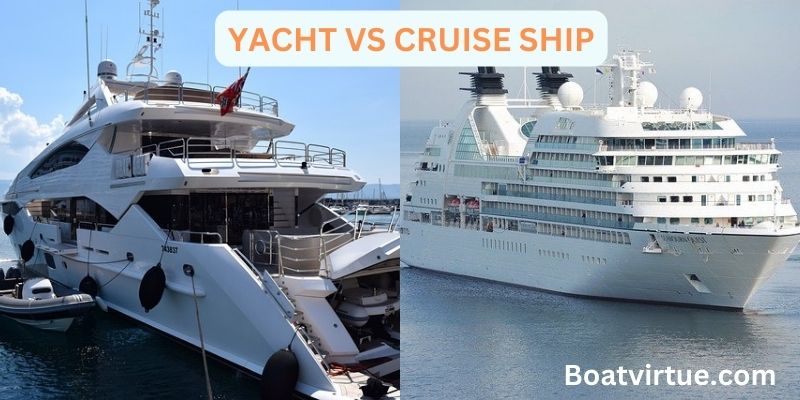
Yacht vs Cruise Ship (4 Basic Differences)
Are you wondering what the difference is between a yacht and a cruise ship? Here’s a quick rundown of the key differences between these two types of vessels.
In simple words, Yachts are smaller , privately owned vessels. Cruise ships are large, publicly owned vessels.
Yachts typically have a small crew and can accommodate a limited number of passengers. Cruise ships have a large crews and can carry thousands of passengers.
Yachts are used for pleasure cruising, racing, or chartering. Cruise ships are used for passenger transportation, vacationing, or business purposes.
Further reading the article will give you detailed answers to your queries.
Table of Contents
Yacht vs Cruise Ship
For starters, yachts are generally much smaller than cruise ships. Yachts also tend to be more luxurious, and they often have a more intimate atmosphere onboard.
Cruise ships, on the other hand, are typically large vessels that can accommodate hundreds or even thousands of passengers.
They also tend to be more budget-friendly, and they offer a wide variety of activities and amenities for guests to enjoy.
When it comes to size, yachts definitely have the upper hand. The average yacht is around 100 feet long, while the average cruise ship is roughly three times that size.
This means that yachts are much more maneuverable than cruise ships, and they can often dock in places that larger vessels simply cannot.
Yachts also tend to be more luxurious than cruise ships. They usually have fewer passengers onboard, so there is more space for each guest to enjoy.
Yachts also often have nicer staterooms and suites, and they may offer more upscale amenities like private balconies and butler service.
Cruise ships, on the other hand, are typically more budget-friendly than yachts. They can accommodate more passengers, so they can spread the cost of the voyage over a larger number of people.
Cruise ships also often have a wider variety of activities and amenities available for guests to enjoy.
When it comes to privacy, yacht vs cruise ship, there are some important considerations to take into account. First and foremost, cruises tend to be much more crowded than yachts.
This means that you’ll likely have less privacy on a cruise ship than you would on a yacht. Additionally, cruises typically offer fewer amenities and activities than yachts.
This means that you’ll likely have to spend more time in your cabin or suite on a cruise ship than you would on a yacht.
Finally, cruises typically have stricter rules and regulations than yachts. This means that you’ll need to be more mindful of your behavior and actions on a cruise ship than you would on a yacht.
The debate between yacht and cruise ship safety is one that has been around for years. Both have their pros and cons, but which one is really the safest?
Let’s start with yachts. Yachts are typically much smaller than cruise ships, so they have less surface area for waves to hit.
They also have a lower center of gravity, which makes them less likely to tip over in high winds. And because they’re not as tall, they’re less likely to be damaged by large waves.
However, yachts do have some safety concerns. They’re not as stable as cruise ships, so they can roll more easily in rough seas.
And because they’re smaller, they can be more easily capsized by large waves. Now let’s look at cruise ships.
Cruise ships are much larger than yachts, so they have more surface area for waves to hit. They also have a higher center of gravity, which makes them more likely to tip over in high winds.
And because they’re taller, they’re more likely to be damaged by large waves. However, cruise ships also have some safety concerns.
They’re not as maneuverable as yachts, so they can’t avoid waves as easily. And because they’re so big, they can take longer to stop in an emergency situation.
It all comes down to the specific situation. If you’re concerned about rolling in rough seas, then a yacht is probably the better choice.
But if you’re worried about being capsized by a large wave, then a cruise ship is probably the safer option.
Of course, the best way to stay safe on the water is to be prepared for both scenarios. Make sure you know how to swim, and always wear a life jacket.
And be sure to check the weather forecast before you set sail . That way, you can be sure to avoid any dangerous conditions.
Itinerary Flexibility & Customization
One of the key advantages that a yacht has over a cruise ship is itinerary flexibility and customization. Yacht charters offer a much more personalized vacation experience.
Allowing you to tailor your trip to suit your specific needs and interests. You can choose to explore secluded coves and anchorages, visit remote islands, or sail to popular tourist destinations.
There is no set itinerary, so you are free to go at your own pace and spend as much or as little time in each location as you wish.
Another advantage of chartering a yacht is that you can often customize the onboard experience to suit your group’s preferences.
For example, if you are interested in watersports, you can charter a yacht with equipment and staff specifically for this purpose.
Or, if you prefer a more relaxed vacation, you can charter a yacht with a spa and onboard chef. There is no need to compromise on your dream vacation when you charter a yacht.
Finally, chartering a yacht gives you the opportunity to enjoy a luxurious vacation without the crowds and hassles often associated with cruise ships.
You will have your own private vessel to enjoy, complete with everything you need for a relaxing and enjoyable trip.
Whether you are looking for an intimate getaway or a grand adventure, a charter yacht vacation is a perfect way to escape the ordinary and experience something truly unforgettable.
If you are interested in exploring the world on your own terms, a yacht charter vacation may be the perfect option for you.
With so many advantages over cruise ships, it is easy to see why this type of vacation is becoming increasingly popular.
Amazing Food & Drink
When it comes to food and drink, there are some big differences between yacht and cruise ship vacations.
On a yacht, you’ll have access to much better food and drink options, as well as the opportunity to dine in more intimate settings.
And of course, you’ll be able to enjoy the beautiful views from your yacht while you enjoy your meal. On a cruise ship, the food and drink options are more limited.
And you’ll likely be stuck eating in the buffet line with everyone else. Another big difference between yacht and cruise ship vacations is the size of the accommodations.
Yachts tend to be much smaller than cruise ships, so you’ll have a more intimate experience on board. You’ll also have more privacy on a yacht since there are fewer people on board.
And of course, you’ll be able to enjoy the beautiful views from your yacht while you relax in your cabin. On a cruise ship, the accommodations are typically larger.
So you’ll have less privacy and more noise. And of course, you’ll be stuck on a cruise ship with hundreds or even thousands of other people.
If you want a more intimate and luxurious experience, then a yacht is probably the better option. However, if you are looking for a more budget-friendly vacation with plenty of activities and amenities, then a cruise ship is probably a better choice.

Yacht vs Cruise Ship: Key Differences Explained
Many travelers look at luxury yacht rentals and cruise ships when planning a vacation at sea. But there are some major distinctions between these two options. Understanding the key differences can help you choose the best one to suit your needs and expectations.
Size and Capacity
The most obvious difference is size and guest capacity. Cruise ships are massive, housing 2000-6000 passengers.
Even small ships carry 600+ people. In contrast, chartered yachts max out around 12 guests, with typical capacities of 6-10. The intimate scale ensures an exclusive escape.
Itineraries and Flexibility
Cruises sail along fixed routes and strict schedules, whereas yacht charters offer total itinerary flexibility. Craft your own custom route with a captain. Spend more time in spots you love and bypass others. The only fixed elements are your start/end ports.
Onboard Experience
The onboard ambiance varies dramatically between the two. Cruise ships feel like floating cities with crowds everywhere. You’ll share amenities with thousands of fellow passengers. Chartered yachts provide a private, peaceful retreat catered to you. No queues or sharing.
Activities and Entertainment
Both offer plenty of amenities, but the vibe is different. Cruises offer fun activities like casinos and shows, while yachts provide relaxation and adventures like snorkeling and fishing. The choice depends on your interests.
Service and Cuisine
With thousands of guests, cruise staff and dining cannot provide truly personalized service. You get more staff interaction on a yacht, including a captain dedicated to your charter. Included in the experience is fine dining with customized menus and premium alcohol.
For an exclusive getaway on your terms, a private yacht charter reigns supreme. But mass market cruises suit travelers who enjoy crowds and scripted entertainment. Evaluate your priorities to choose the best seafaring vacation.
Booking and Costs
Booking a cruise is relatively simple through major cruise lines or agencies, while yacht charters require researching reputable brokers and charter companies, of which there are many. Cruise fares per person are lower, but a fully crewed yacht divided among guests can still be competitive. Keep costs variable by booking a bareboat yacht charter.
Destinations and Departure Ports
Cruise ships certainly provide a wide variety of itineraries, but their large size limits them to major cruise ports. Yachts can access small coves, secluded islands, and exotic locales that mega-ships can’t reach. Many more departure ports are accessible for yacht charters too.
Onboard Accommodations
Staterooms on a cruise provide basic comfort, often with an ocean view. Yachts feature lavish staterooms and master suites with hotel-style amenities. You’ll get complete privacy, often with en-suite bathrooms. Some large charter yachts rival small boutique hotels in luxury. .
Health and Safety
Mass gatherings on cruises can enable the rapid spread of illnesses like COVID or norovirus. Yachts provide isolation from crowds and allow immunocompromised guests to vacation safely. Strict protocols keep private yachts disinfected, and both options mandate safety drills and procedures.

Read Our Billfish Policy

Our Crews Prefer


IMAGES
VIDEO
COMMENTS
This exploration will clarify what sets a yacht apart from the great many categories and varieties of boats on the market, which includes a diverse array of watercraft, making the distinction between a yacht and boat clearer. The Origin of Yachts. The word "yacht" is derived from the Dutch word for "hunter."
Ultimately it comes down to this: all three of them are boats, but yachts are fancier, larger, and used for recreation, and ships are even larger, used commercially or by the navy, and are meant to cross oceans. The dividing line is sometimes thin, but generally speaking, when it comes to boats vs. ships.vs. yachts you can go by the adage " I ...
The difference between the two broad categories is determined by one key factor. ... The only distinction between a yacht and a ship is simple: It is the vessel's intended purpose. When you ...
There are many nuances and subtle differences between water vessel types, but below are some of the main differences. In general, yachts are either sailing or motor vessels used for pleasure. Yachts are often luxurious and equipped with an overnight cabin. Boats can be either propelled sail or a motor and come in varying sizes.
Their size and structure are built to handle long voyages across oceans and to carry substantial amounts of goods or people. A ship's design is often more utilitarian compared to the luxury and comfort-focused design of a yacht. 12. Another notable difference between a yacht and a ship is in the ownership and operation.
In casual use, the word boat is often used to refer to any watergoing vessel, regardless of its size or how it's powered. However, large oceanfaring watercraft—those that use multiple sails or engines—are more properly called ships. In contrast, the word ship isn't commonly applied to smaller craft. The word yacht is typically used to ...
A boat becomes a "ship" often once it's reached a specific size, which tends to be on the bigger side and suitable for sea travel. In most cases, ships serve as working vessels, such as transport or cruise liners. "Yachts" are also more substantial, but they're solely recreational vessels and often used for luxury purposes.
It also refers to a tender to a bigger boat or yacht. "Ship" is a large commercial boat, often used for distance travel and transport of goods or passengers - cruise ship, container ship, etc. "Yacht" is typically a larger boat with luxury amenities used as a recreational vessel— motor yacht, sailing yacht. "Superyacht" is a ...
Although this rule is less relevant today, it does come up frequently in maritime circles when discussing the difference between a ship and a boat. Bottom line. There's no hard-and-fast rule when it comes to determining whether a vessel is a ship or a boat. Generally, the most common ideas about this seem to revolve around size: tonnage, number ...
The main difference between yacht and ship is that a yacht is small and is mainly used for entertaining purposes, whereas a ship is bigger and is used to carry passengers and cargo.. Although both travel on water, there are considerable differences between yachts and ships. Key Areas Covered. 1. What is a Yacht - Definition, Features
The difference between a ship and a boat is always a hot topic of discussion among people. Mentioned herein are seven main aspects which help to differentiate between a ship and a boat. ... When I queried sailing yachts that had berths under part of the deck, it was modified to the deck on a yacht is as much structural as deck, but if a vessel ...
6 Differences Between Yachts and Boats. 1. Size. The first key difference between a boat and a yacht is their size. A yacht is typically bigger than a boat and whilst there is no strict definition of what a yacht is, the general consensus is that if it is over 40 feet in length, it is usually considered a yacht.
A ship is larger than a yacht, and the term is usually used to describe a working craft rather than something recreational. A ship needs a full crew, whereas a yacht doesn't always, and a boat rarely does. A boat can be anything from a basic rowing boat upwards, and plenty of captains affectionately call their ship a 'boat', no matter how ...
The main difference between a ship and a boat is their size. A ship is typically larger than a boat and can carry more cargo and passengers. ... There is no clear distinction between a boat and a yacht. Generally, a yacht is considered a luxury vessel that is used for pleasure cruising and is larger and more expensive than a typical boat.
Defining 'boat' seems to be stickier than 'yacht' or 'ship.'. We hear many captains referring to their 'boat,' irrespective of size, function, or fit-and-finish. Short of being deliberately confusing, it seems as though the word boat has become a colloquialism, pet phrase, or slang term for any floating object more complicated ...
For those who are new to sea life, it's okay to not understand the difference. There are still some sea lovers who couldn't tell you the difference between yachts and superyachts, between boats and ships. And some may say it doesn't even matter. Some distinctions are clear, like the difference between a ship and schooner.
A ship and a yacht are both waterborne vessels, but they serve distinctly different purposes and have varied features. Ships are generally built and designed for cargo transportation, passenger transport, or specialized tasks in the deep waters. On the other hand, yachts are more oriented towards personal or recreational use, with an emphasis ...
As previously mentioned, size matters when it comes to differentiating between a boat and a yacht. Yachts can range from about 35 feet in length all the way up to 160+ feet in length, however, most will be somewhere in the middle. Anything over 160 feet would be considered a "Superyacht". Boats are generally anywhere from 15-30 feet in length.
In intransitive terms the difference between ship and yacht is that ship is to embark on a ship while yacht is to sail, voyage, or race in a yacht. As nouns the difference between ship and yacht is that ship is a water-borne vessel generally larger than a boat while yacht is a slick and light ship for making pleasure trips or racing on water, having sails but often motor-powered.
Here's a quick rundown of the key differences between these two types of vessels. In simple words, Yachts are smaller, privately owned vessels. Cruise ships are large, publicly owned vessels. Yachts typically have a small crew and can accommodate a limited number of passengers. Cruise ships have a large crews and can carry thousands of ...
The most obvious difference is size and guest capacity. Cruise ships are massive, housing 2000-6000 passengers. Even small ships carry 600+ people. In contrast, chartered yachts max out around 12 guests, with typical capacities of 6-10. The intimate scale ensures an exclusive escape.
As nouns the difference between ferry and yacht. is that ferry is a ship used to transport people, smaller vehicles and goods from one port to another, usually on a regular schedule while yacht is a slick and light ship for making pleasure trips or racing on water, having sails but often motor-powered. At times used as a residence offshore on a ...
As nouns the difference between vessel and yacht. is that vessel is any craft designed for transportation on water, such as a ship or boat while yacht is a slick and light ship for making pleasure trips or racing on water, having sails but often motor-powered. At times used as a residence offshore on a dock.
Liu also retells the gruesome tale of the yacht Mignonette in 1884. True, it was struggling through a storm system, but what did for it was a "monstrous" 12-meter rogue wave. The captain and three crewmen escaped in a dinghy. After almost three weeks afloat without provisions, they ate the cabin boy and were rescued by a passing ship five days ...